Birds, herps and mammals in Indonesia: Java, Bali, Lombok 2012
During our family holiday for five weeks in July and August 2012 I tried to combine typical holiday activities with searching for birds and other animals. Several attractive areas were visited. The holiday was not extensively planned beforehand. We just had bought tickets to and from Jakarta. Traveling was with rugsack by lokal transport. For translocation we have used almost all types of transport available in Indonesia: by airplain, train, bus, bemo, taxi, horse carriage, on the back of a motorbike, by becak and foot. Next to the normal luggage I had to carry the extra weight of a good binocular, a photocamera with tele and a handbook of birds of western Indonesia. This handbook weighed almost a kilogram. In order to reduce weight I seperated the plates from the text in the book and just took the colour plates with me. Lombok was outside the scope of the book and contains seperate species because it is situated on the other side of the Wallace line and belongs to eastern Indonesia. I refrained from taking with me a tripod. To have the stuff ready at any moment and to reduce the chance of getting lost or stolen I held the bag with costly goods (binocular Swarovski EL 8,5x42 and Nikon D200 with tele 7--200 mm and 1,7 converter) constantly with me. Taking pictures at the edge of the possibilities, combining 200mm with 1,7 converter and no tripod garanteed no high quality but helped a lot in registrating characteristics.
Click here to see a checklist of species from each location.
Birds
From the several hundreds of species on the islands visited just about 90 species were seen and recognised. Although spending time at shores and beaches almost no sea or shore birds were present. A juvenile Christmas Frigatebird at the socalled 'black sand beach' near Padangbai on Bali was one of the few exceptions. I could also witness a White-bellied Fish-Eagle catching a fish from the sea at the same location. Other typical birds seen at the shore were Pacific Reef Egret and Common Sandpiper. Some Sterns were present but they were out of reach.
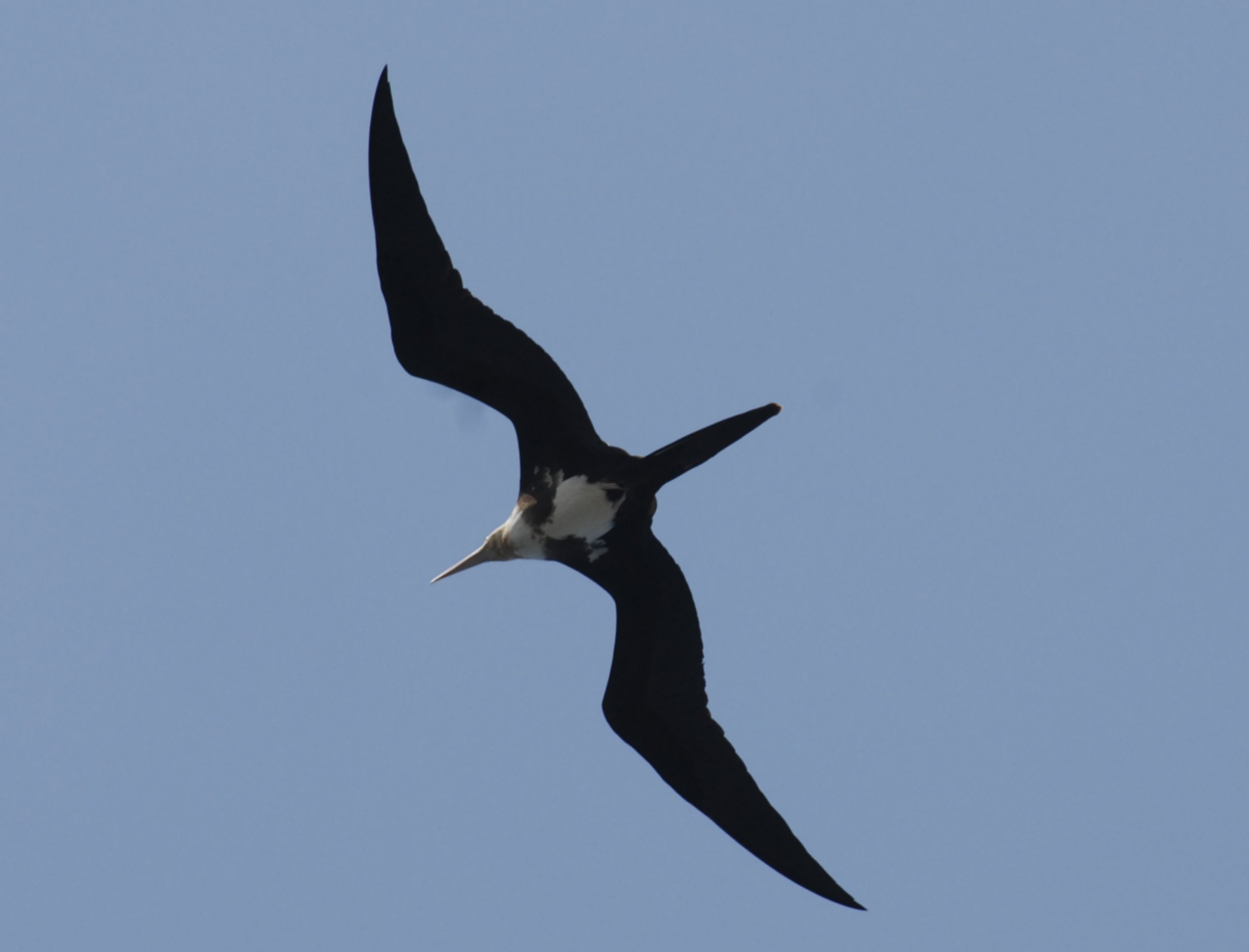
Christmas Frigatebird, black sand beach, Padangbai, Bali.
Owls were never seen or heard. Other night active birds were observed but could not be given names. There were for instance silhouets of flying Nightjars. From the Kingfishers several species were registered. Collared Kingfisher was the most common one, even far from water. On Java and Bali the magnificant purple Javan Kingfisher was sometimes encountered near water. The smaller Cerulean or Small Blue Kingfisher was present near Kuta Lombok. At Bekol (Baluran) I saw Blue-eared and Sacred Kingfisher.
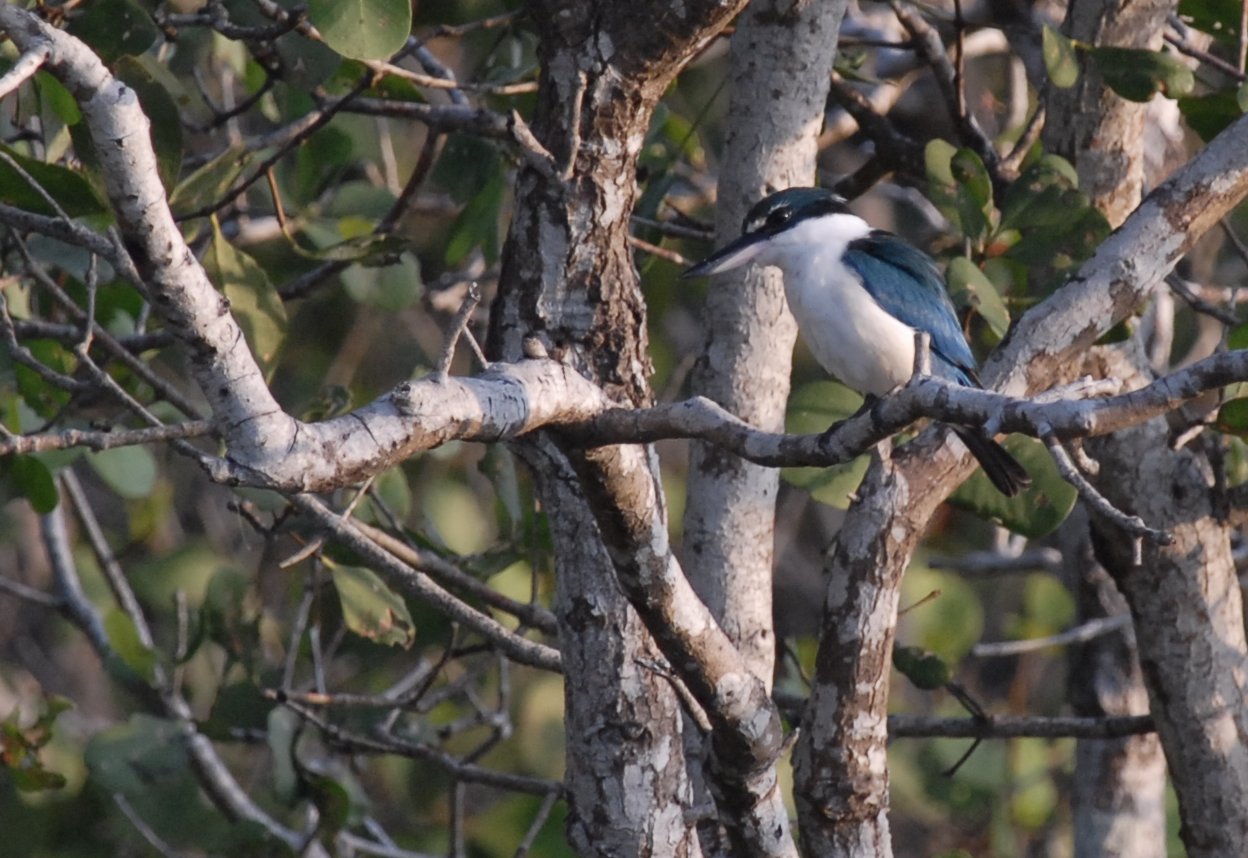
Collared Kingfisher.
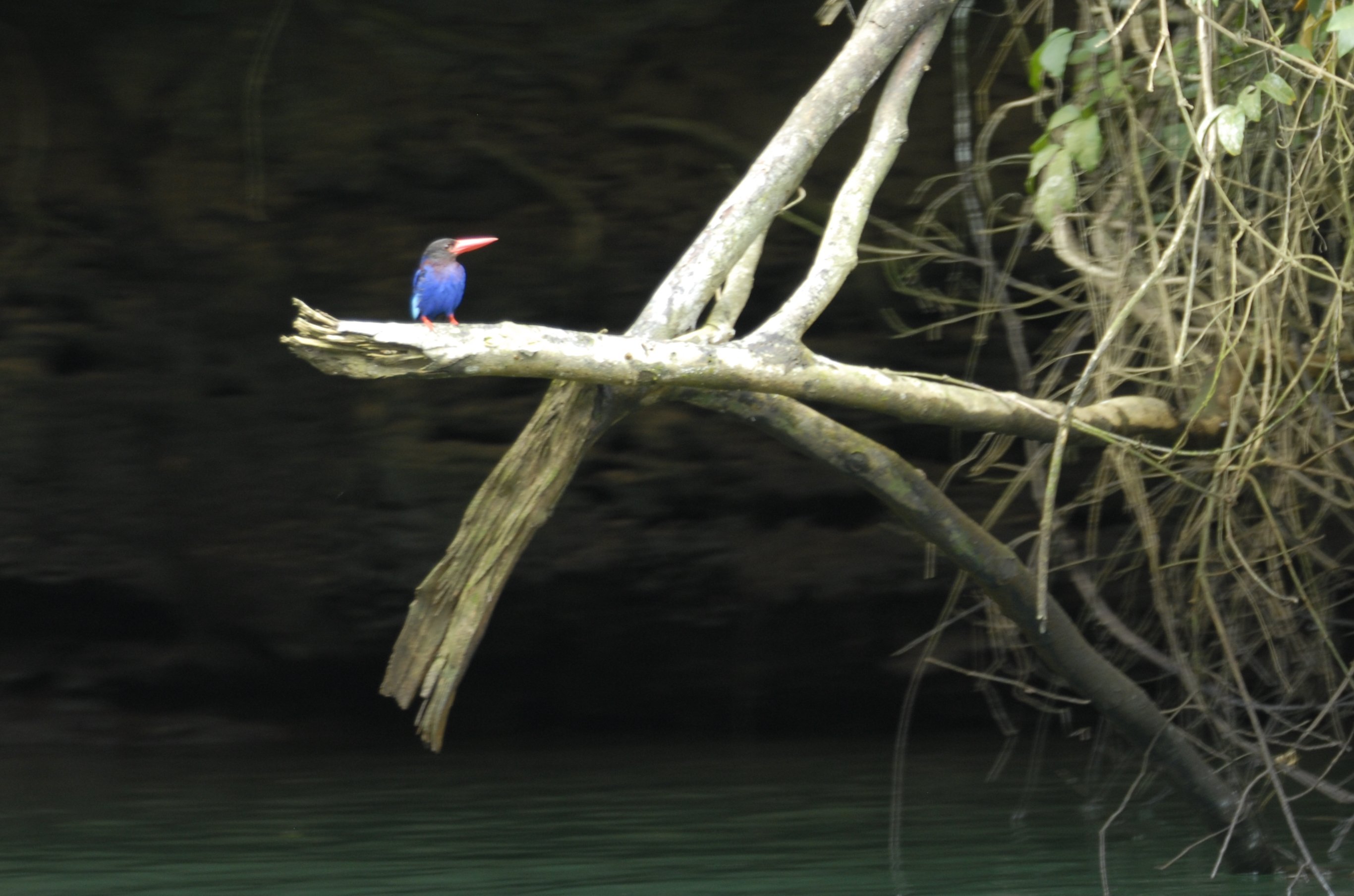
Javan Kingfisher.
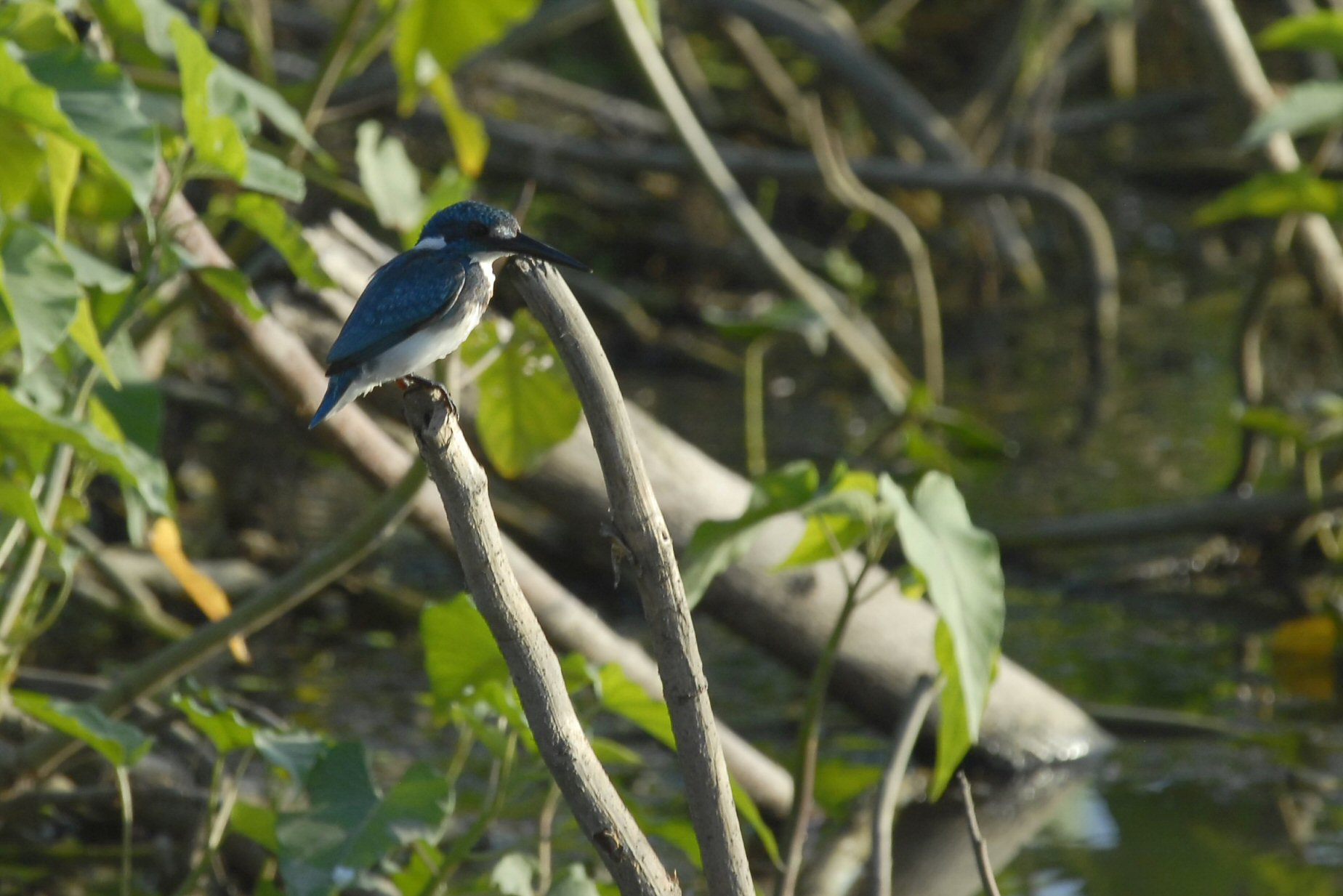
Small Blue Kingfisher.
Many species were found in the Botanical Garden and National Park at Cibodas on Java. Javan Hawk-Eagle was missed here but the Black Eagle could be seen clearly. At the waterfall a Spotted Kestrel was seen catching a slender snake from the forest edge and feeding it to its young. The nest was next to the waterfall. At Bali and Lombok I frequently saw Brahminy Kites.
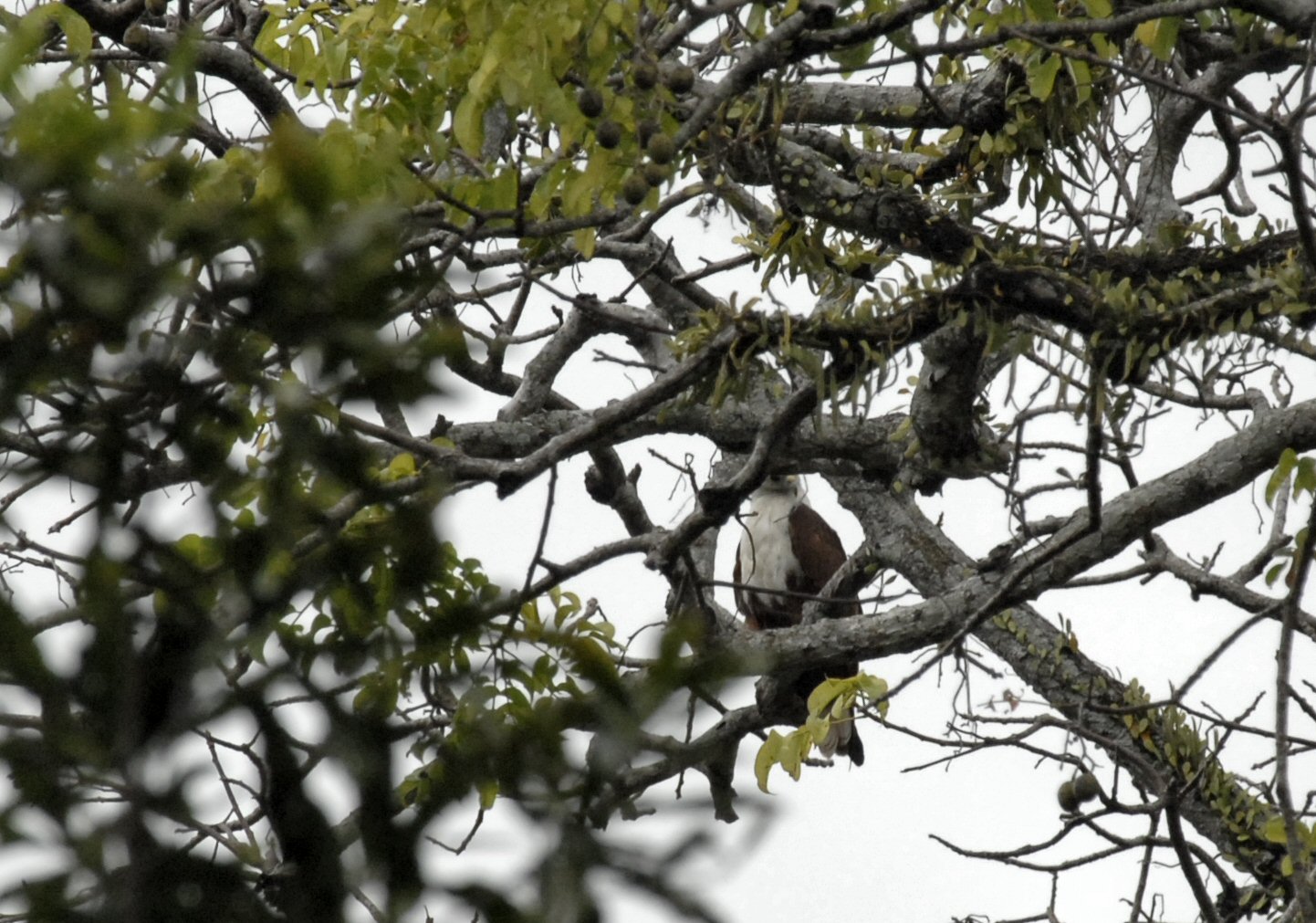
Brahminy Kite, Suranadi, Lombok.
Very nice encounters were made with the cute little Pygmy Wren-Babblers. They were not shy at al. Like Wrens they scoured the forest bottom, sometimes within one meter distance. Beautiful coloured or strange build birds were present there, like the Pink-headed Fruit-Dove, green and red Barbets from which the species could not be affirmed, red and black (males) or yellow and black (females) Sunda and Scarlet Minivets, Sunda Whistling Thrush (like violet blackbirds). Unbelievable yellow Black-naped Oriole were present in Bedegul, Bali.

Sunda Whistling Thrush, Cibodas, Java.
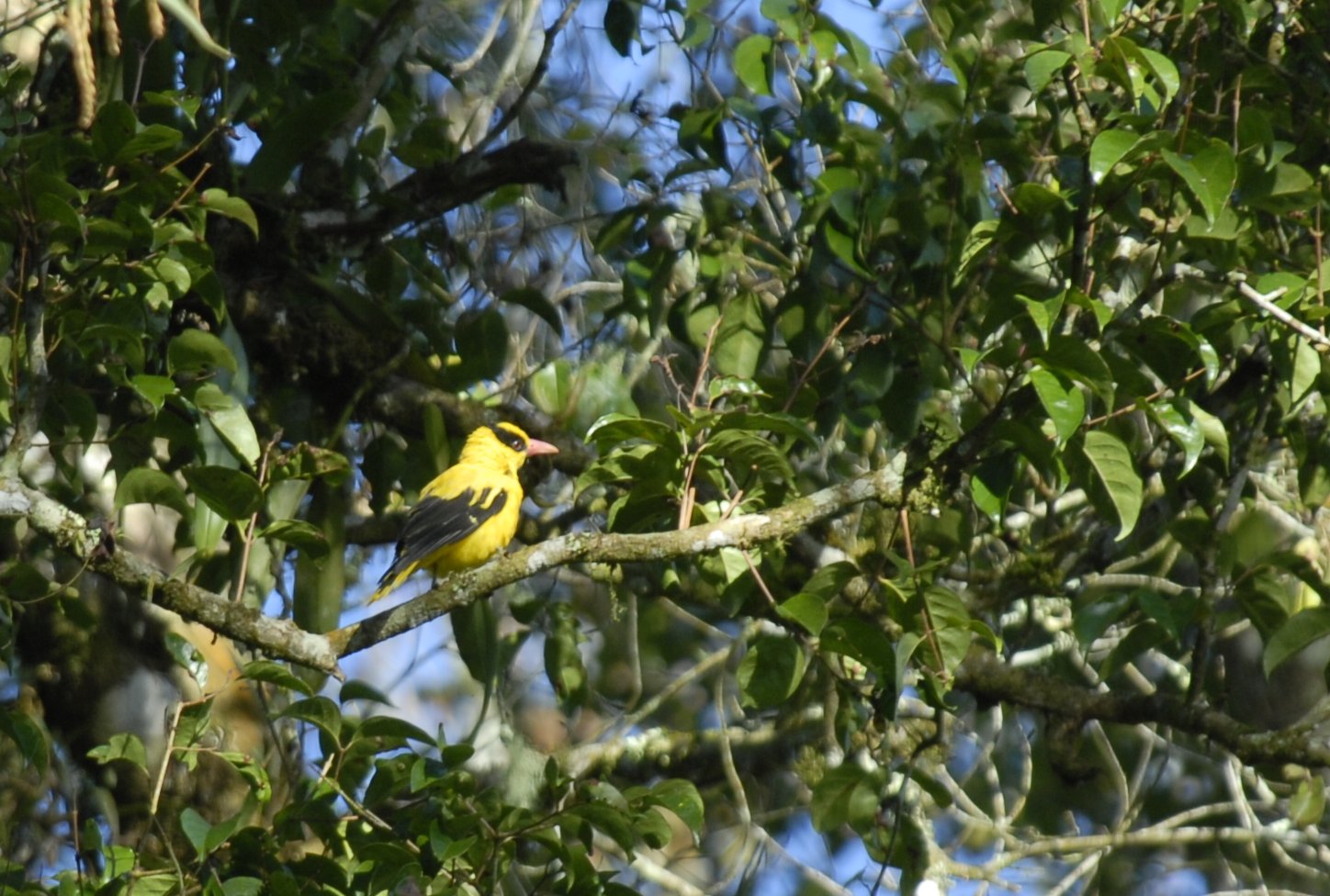
Black-naped Oriole, Bedugul, Bali Botanical Garden.
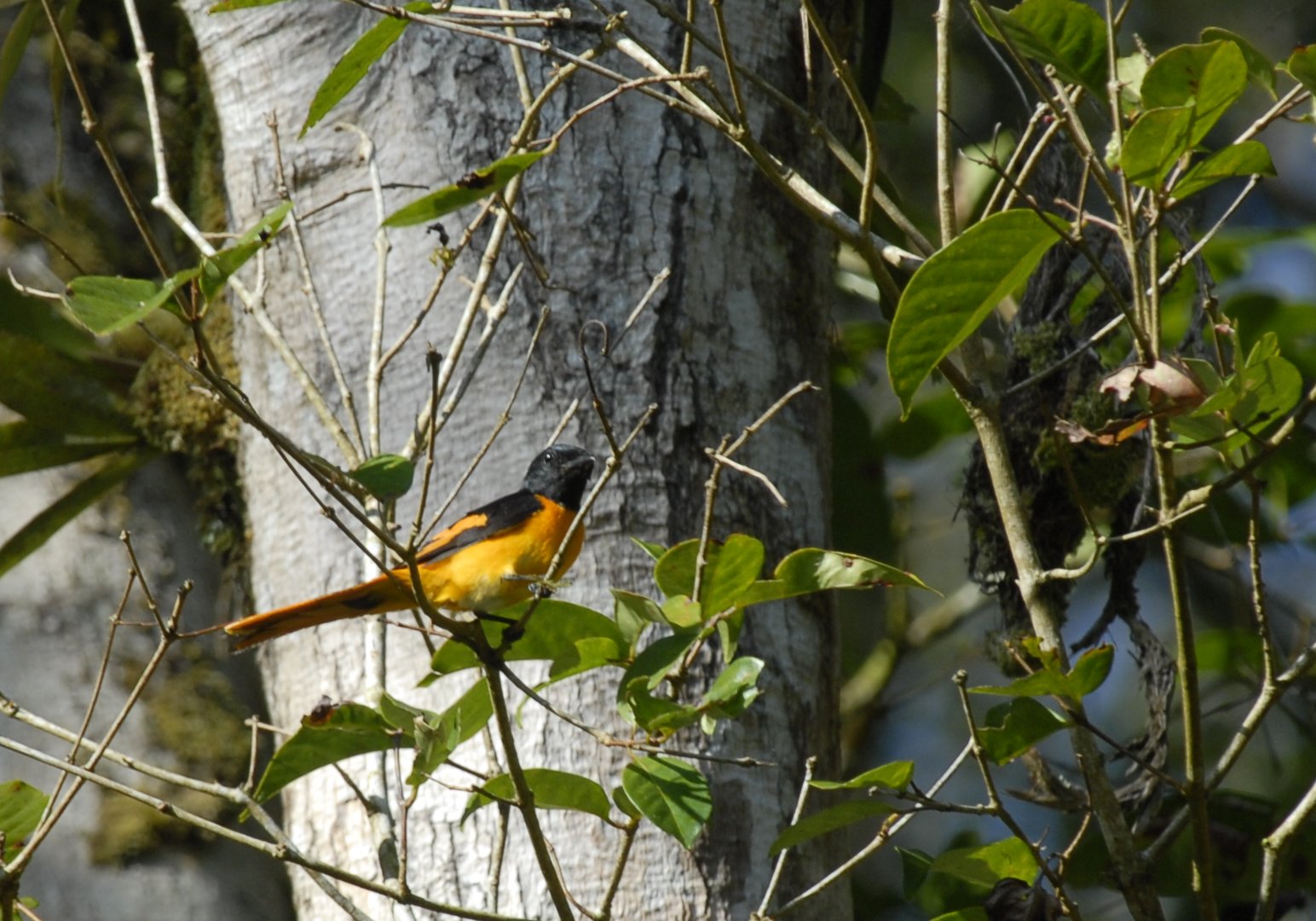
Scarlet Minivet, Bedugul, Bali Botanical Garden.
Smaller passerines with lovely colours at Cibodas were for instance the metalic purple with yellow Olive-backed Sunbird, Little Spiderhunter with extremely long and curved bill, several Flycatchers like the black and white and fairly common Little Pied Flycatcher, the Mugimaki Flycatcher and the Indigo and/or Pale Blue Flycatcher. Blue Nuthatch I met here in the Botancal Garden.
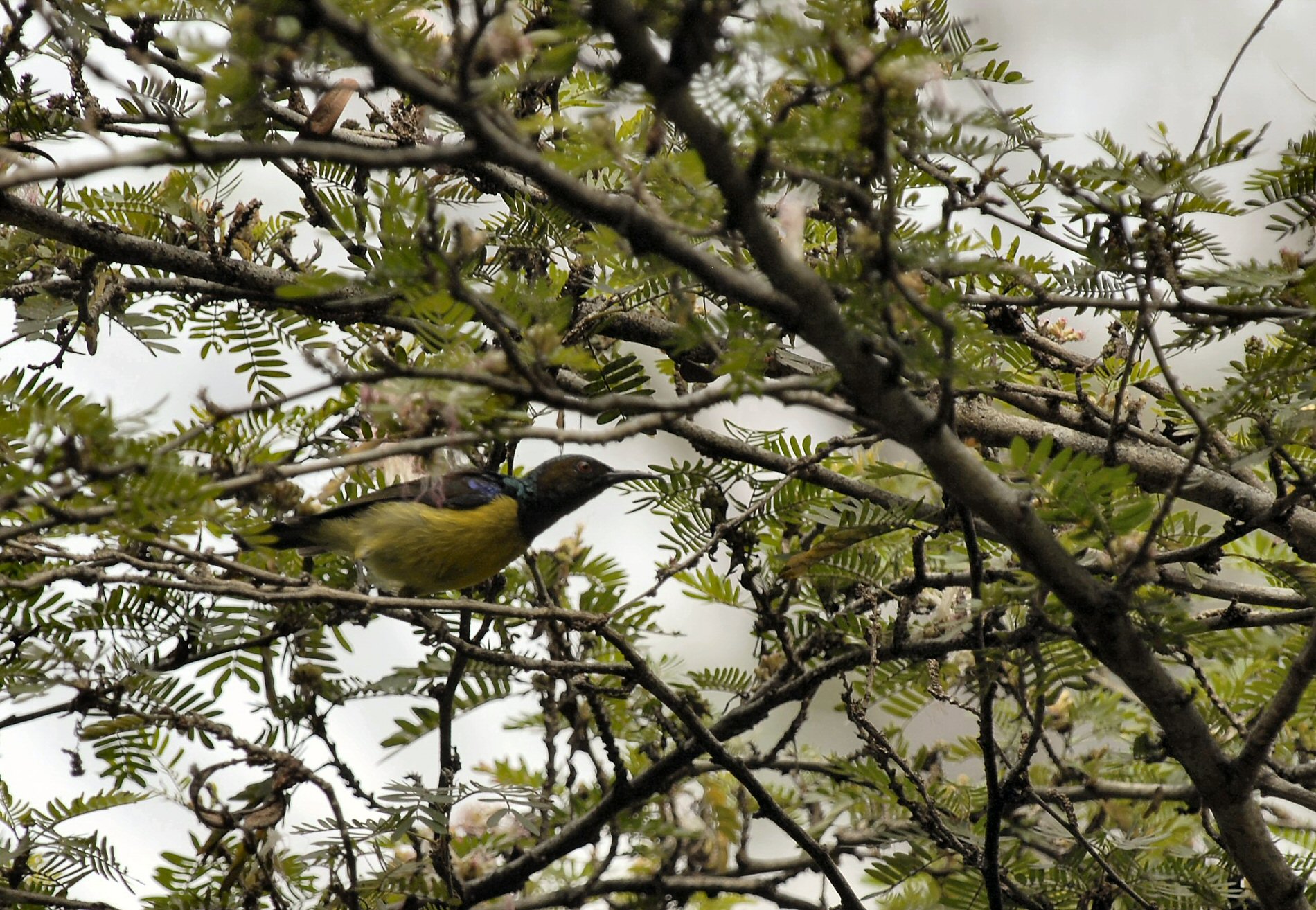
Olive-backed Sunbird.
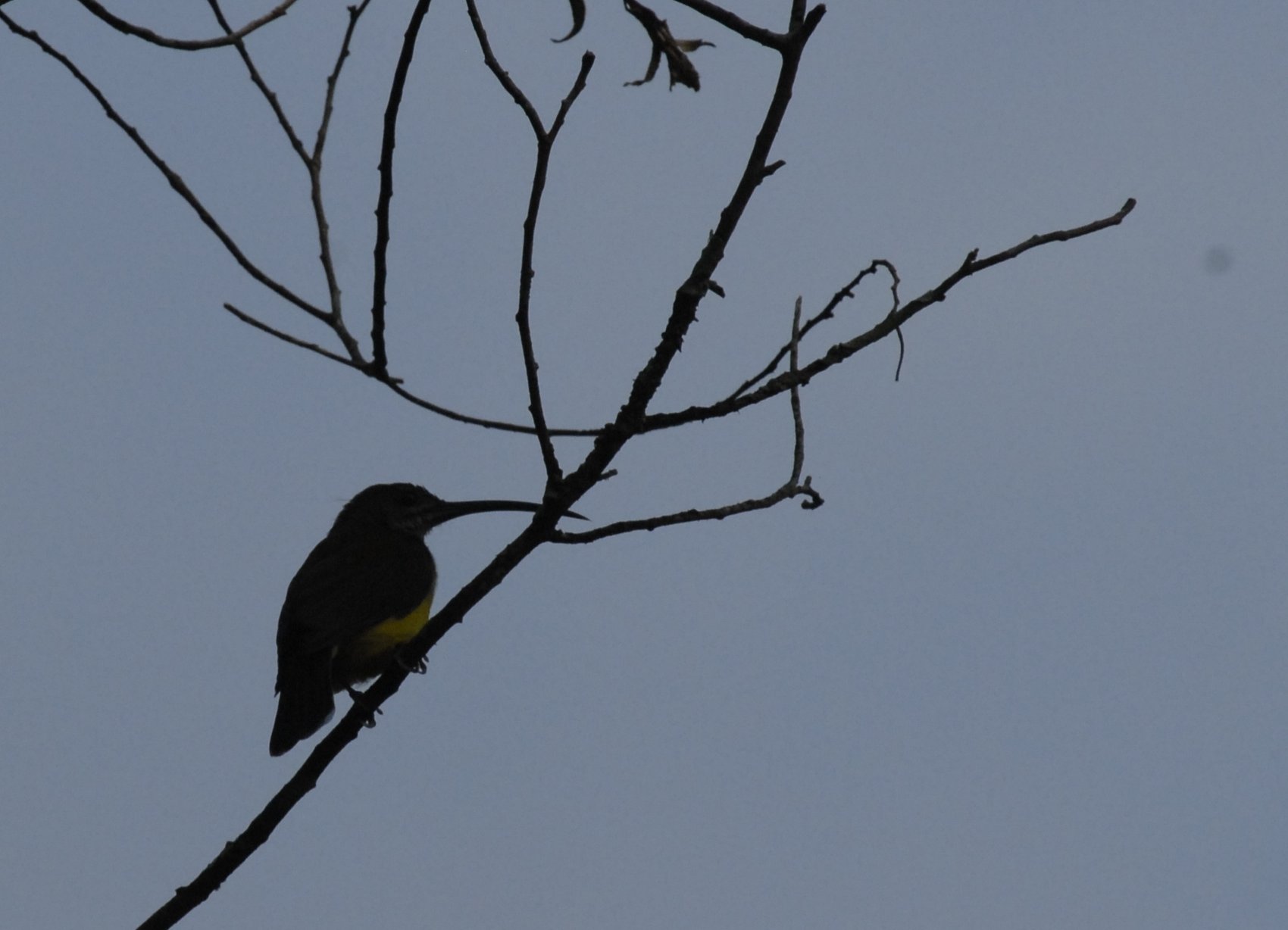
Little Spiderhunter.
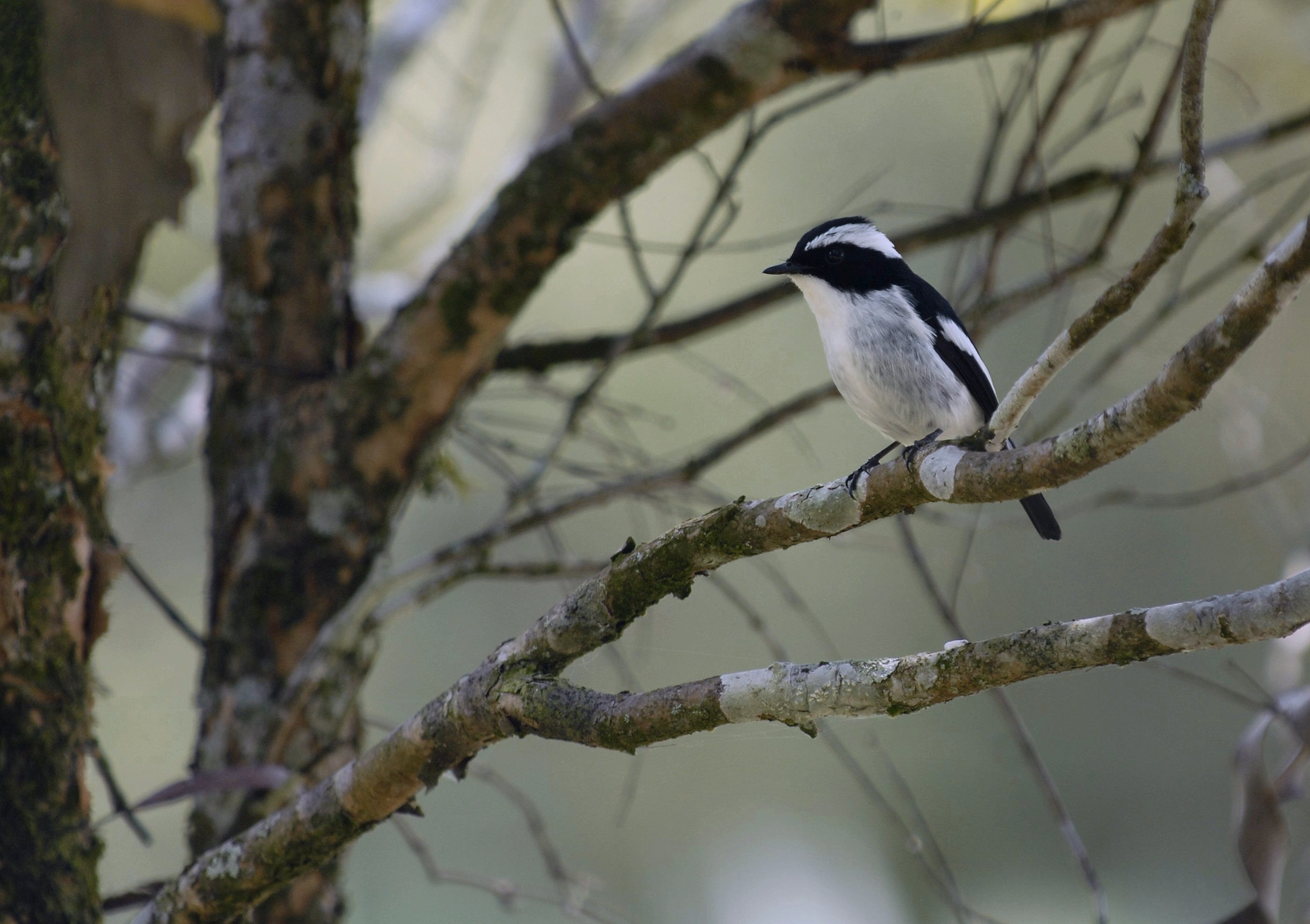
Little Pied Flycatcher.

Blue Nuthatch, Botanical Garden, Cibodas, Java.
From another group of vividly coloured small birds, the Flowerpeckers, the Blood-breasted Flowerpecker was seen at Cibodas, while the even more red Scarlet-headed Flowerpecker already was seen at the Bogor Botanical Garden. Blue-tailed Bee-eaters lived at Kuta, Lombok.
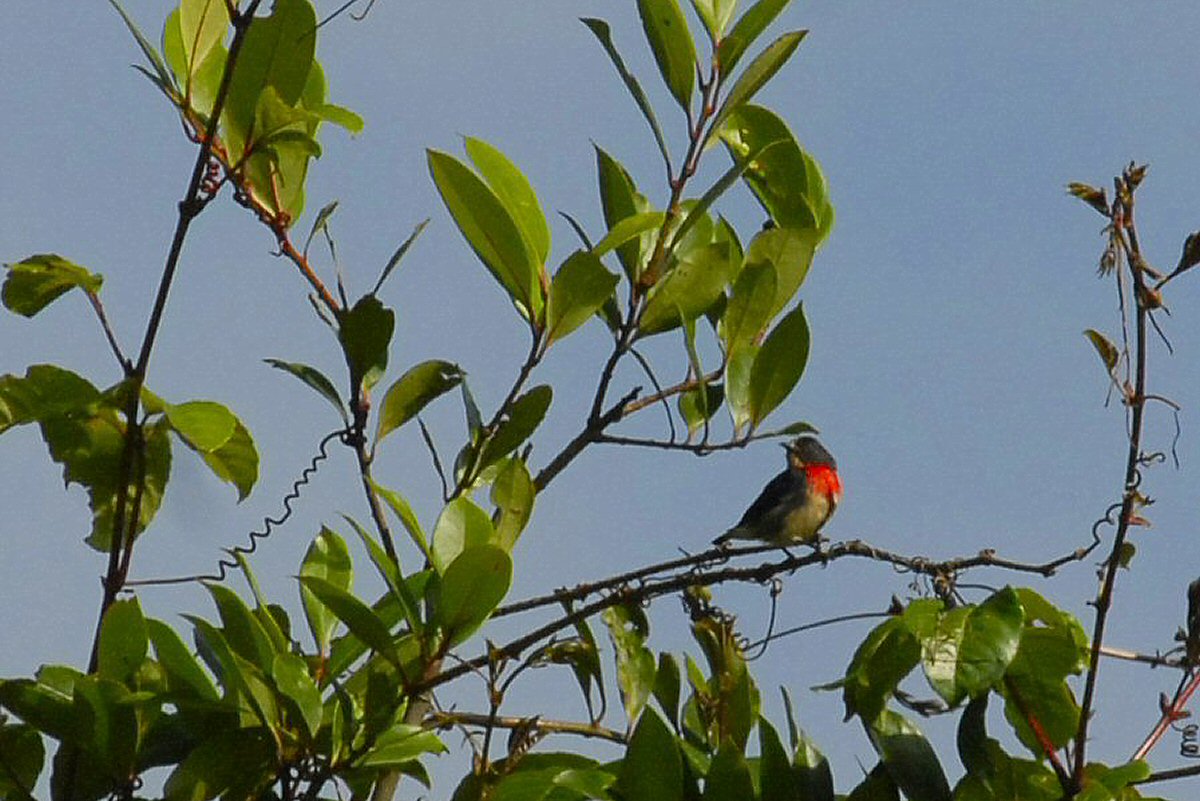
Blood-breasted Flowerpecker.

Blue-tailed Bee-eater.
Bulbuls could be found almost everywhere during our holiday. Most of the time Yellow-vented Bulbuls were present, but sometimes they were replaced by Sooty-headed Bulbuls, like at the Borubudur. At Cibodas I found the strange coloured Orang-spotted Bulbul.
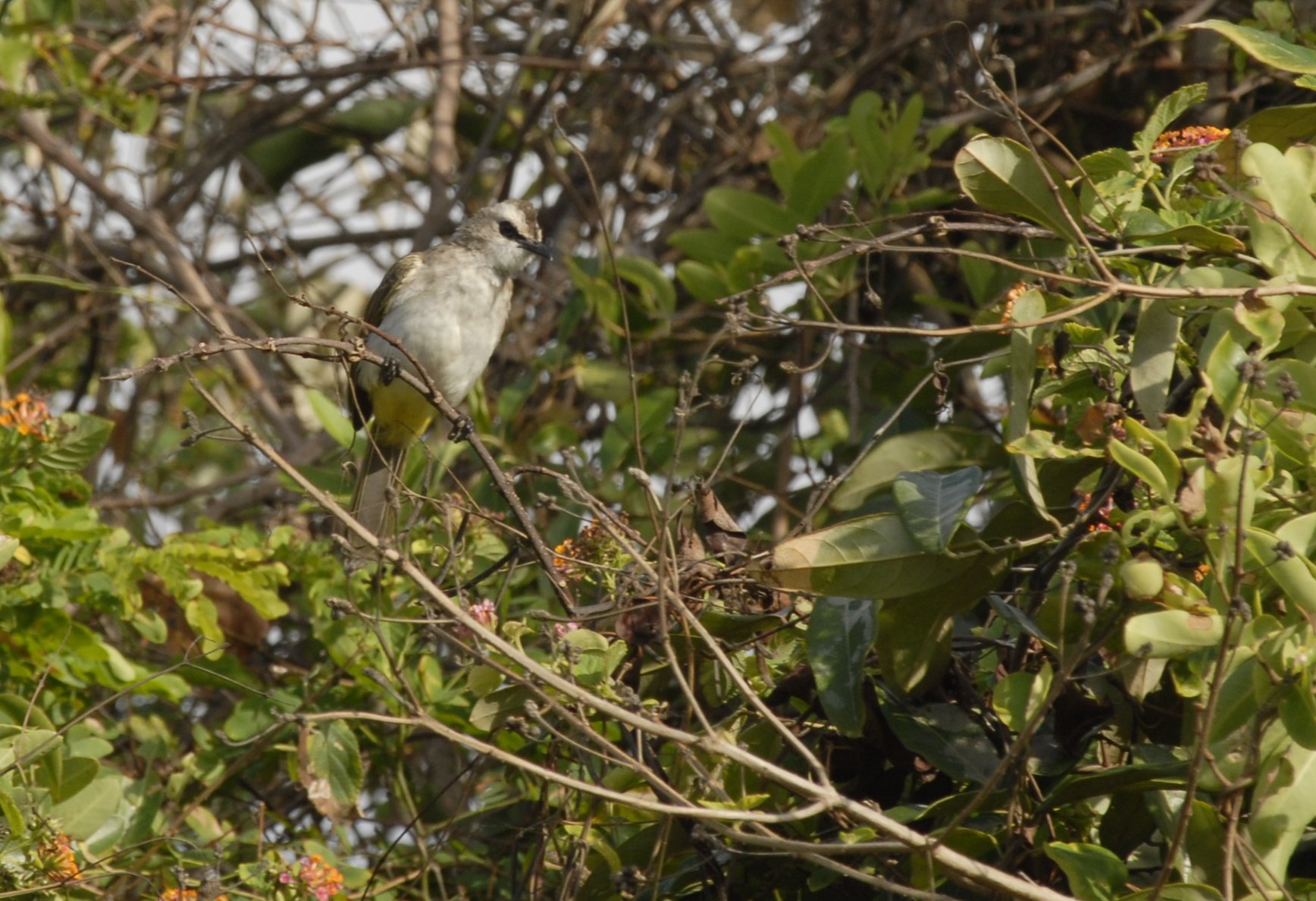
Yellow-vented Bulbul.
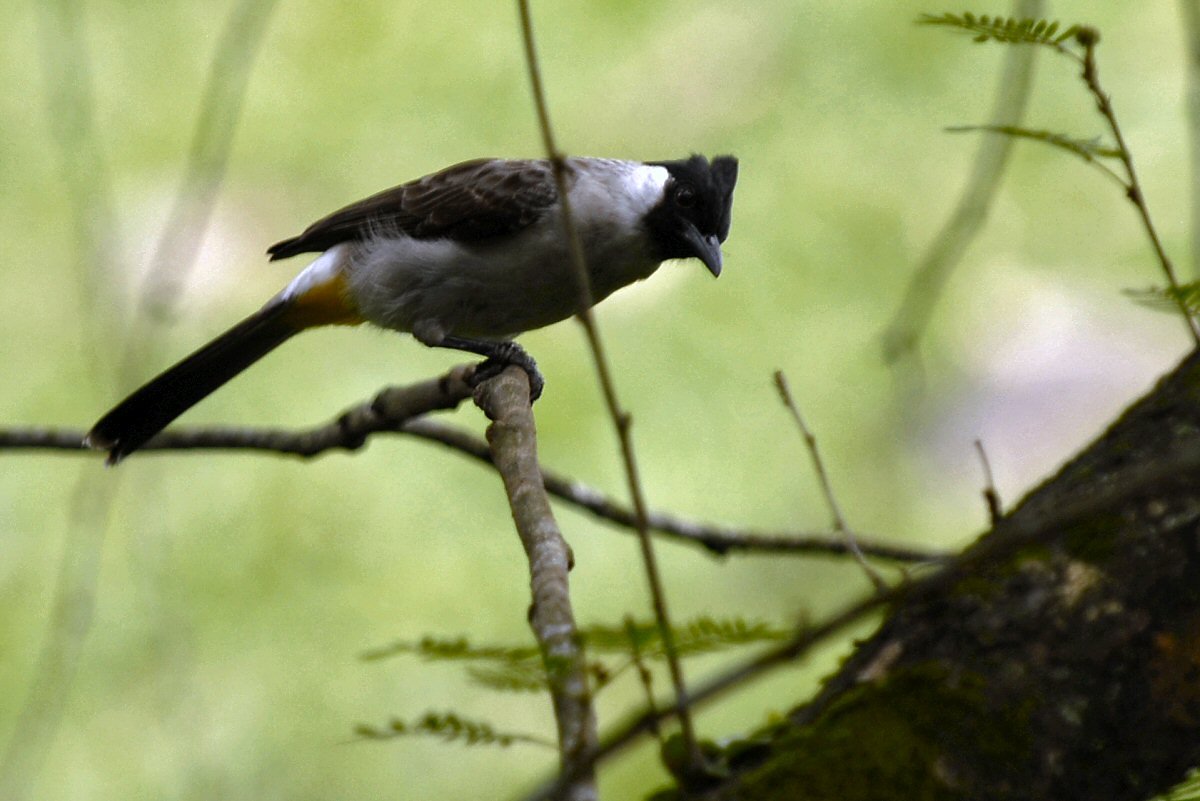
Sooty-headed Bulbul.
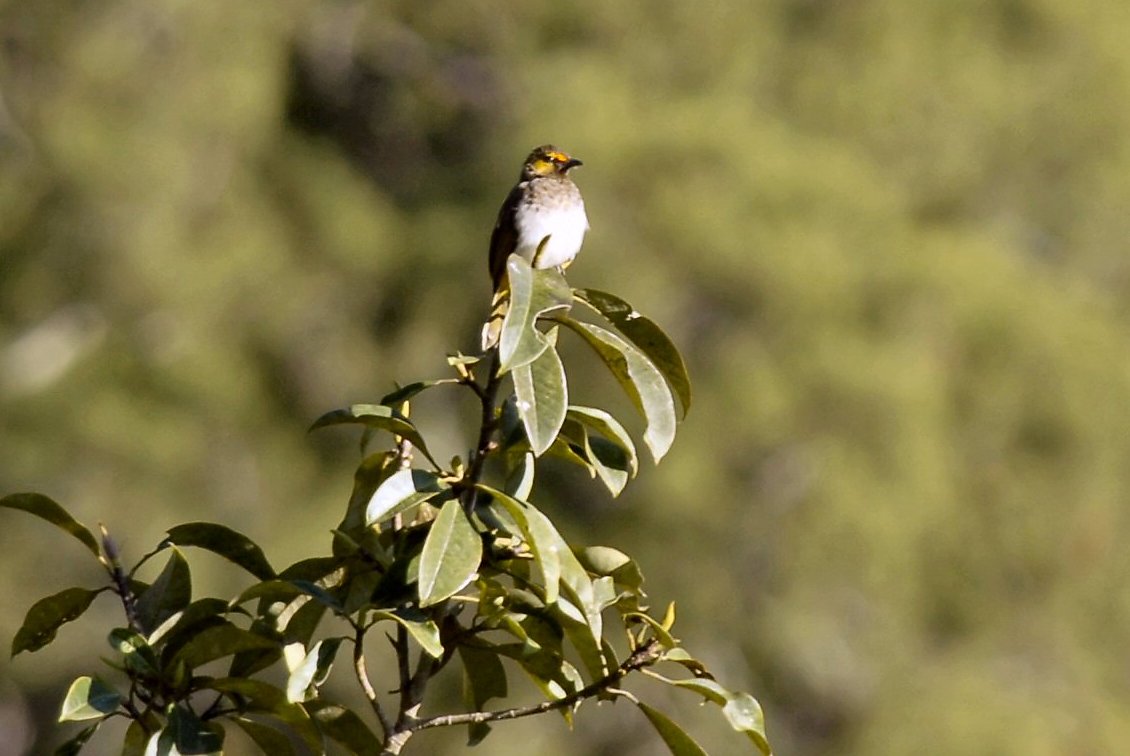
Orang-spotted Bulbul.
Also at Cibodas, which is extremely rich in species I found the Rufous-tailed Fantail with its long and broad erected tail. Common Iora could be seen at more localities. From the Warblers only the Mountain Leaf-Warbler could be recognised for sure. On Lombok the Zitting Cisticole was present near the coast in scattered bushes in pretty dry habitat. At the same location Long-tailed Shrikes, Javan Plover, Common Pipit and White-shouldered Trillers were seen.
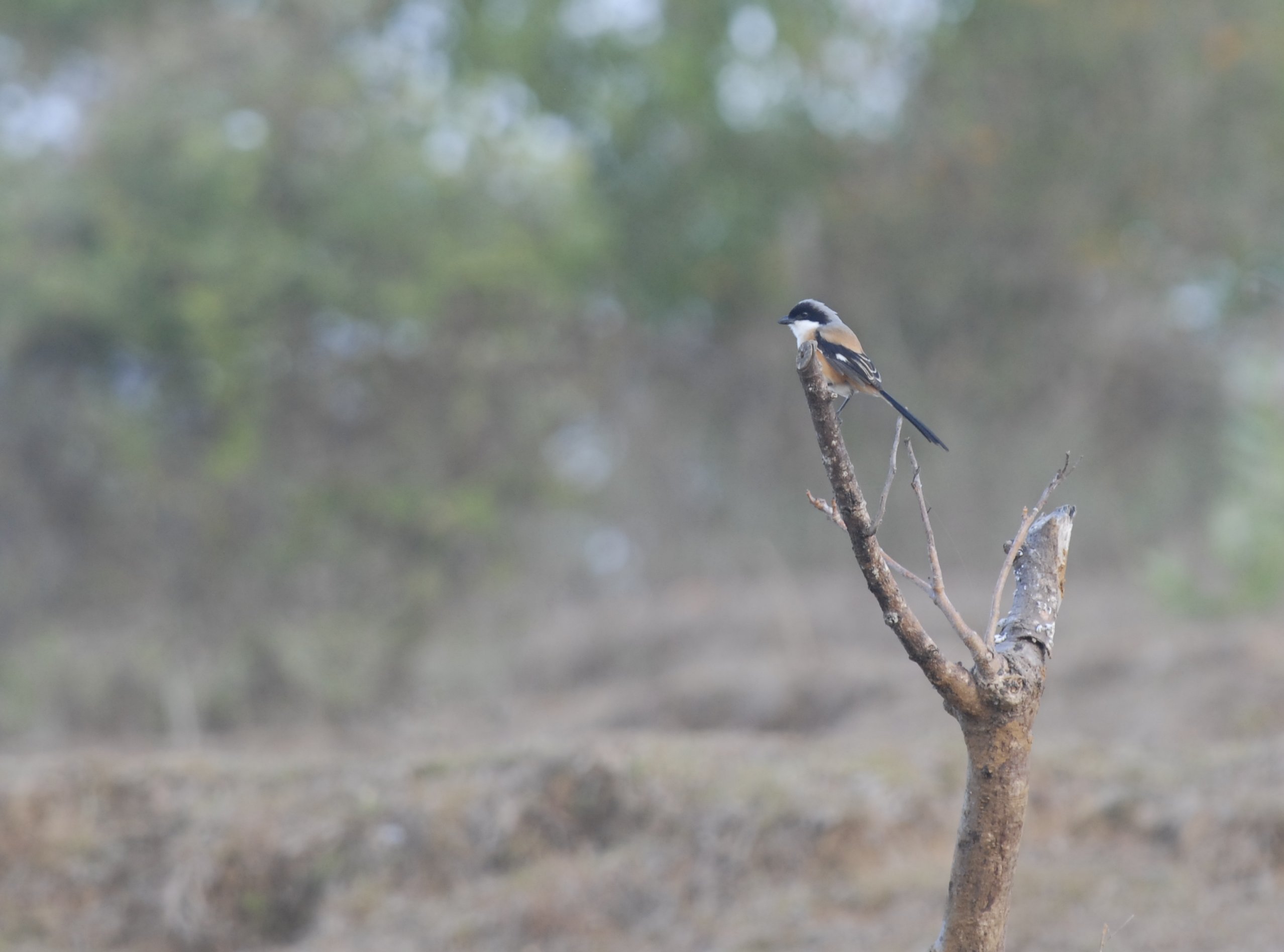
Long-tailed Shrike.
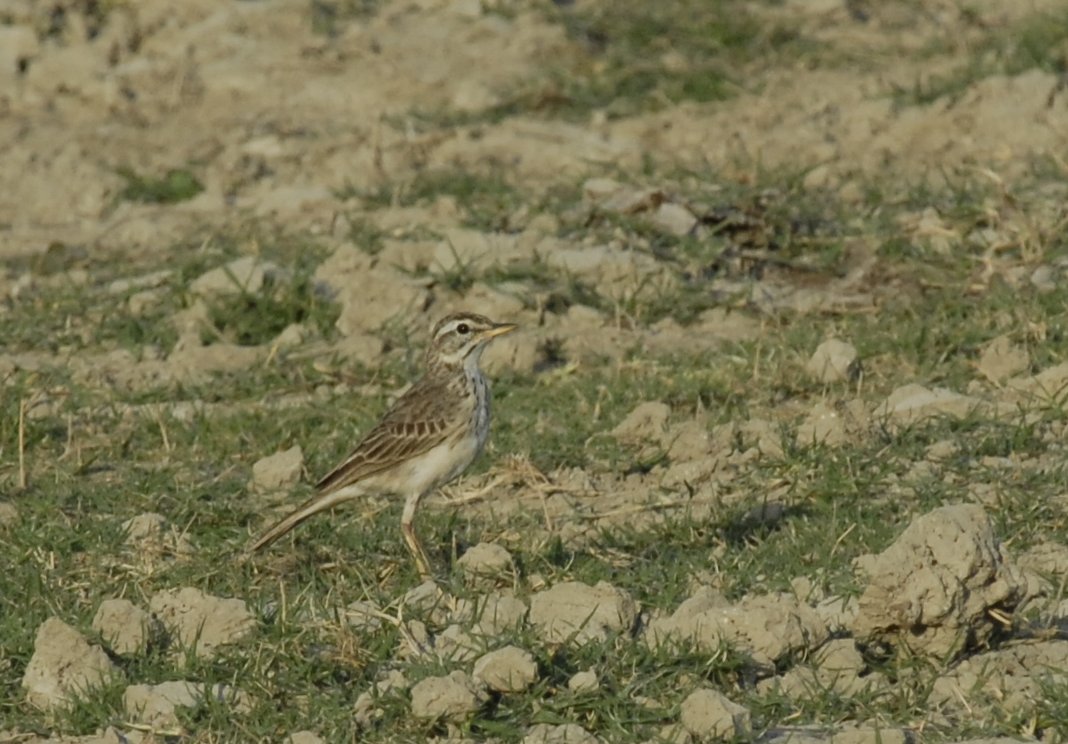
Common Pipit.

White-shouldered Triller.
Another rich area was the Baluran National Park, a savanna-like area at the northeastern tip of Java. Here the Oriental Pied Hornbills were seen. Another speciality for that park is the magnificent Green Peafowl. Green Junglefowl was also easy to spot there.
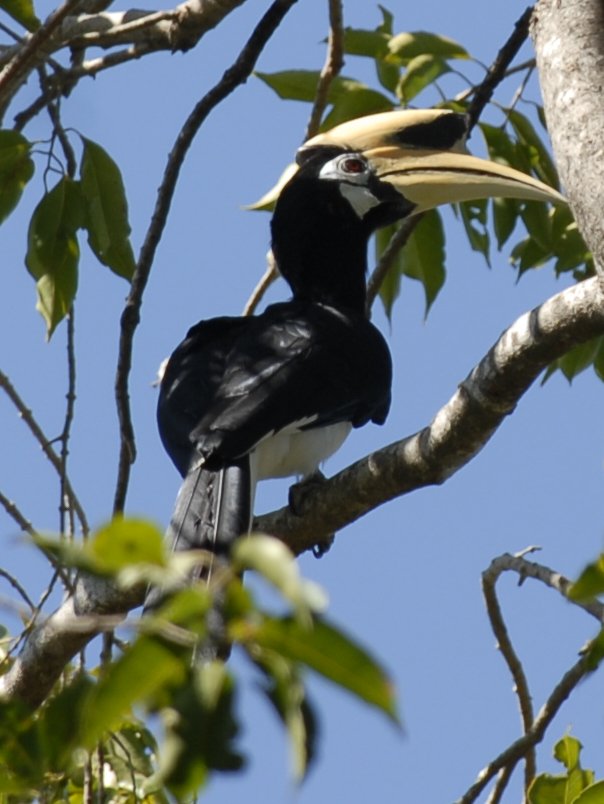
Oriental Pied Hornbill, Bama beach, Baluran, Java.
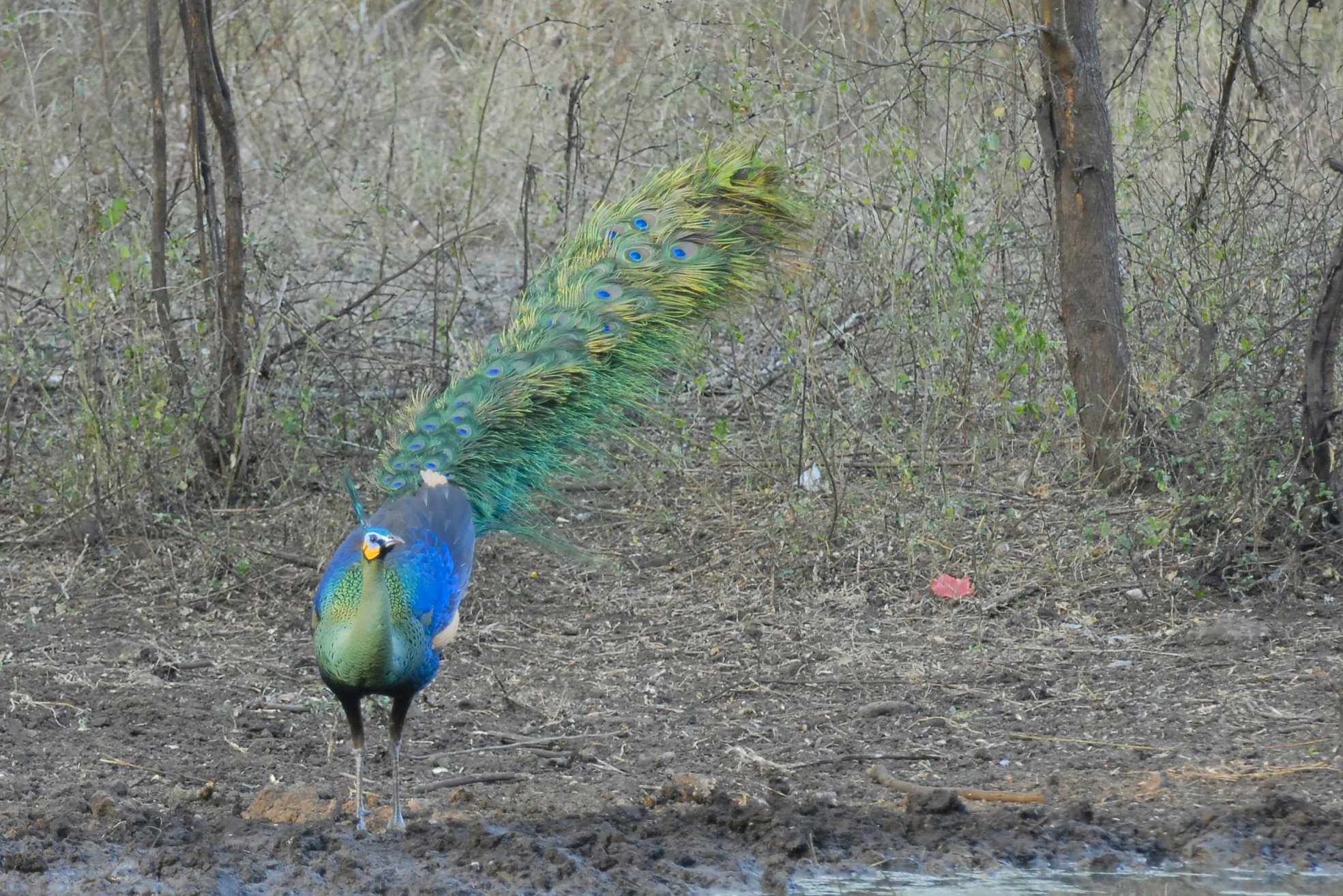
Green Peafowl, Bekol, Baluran, Java.
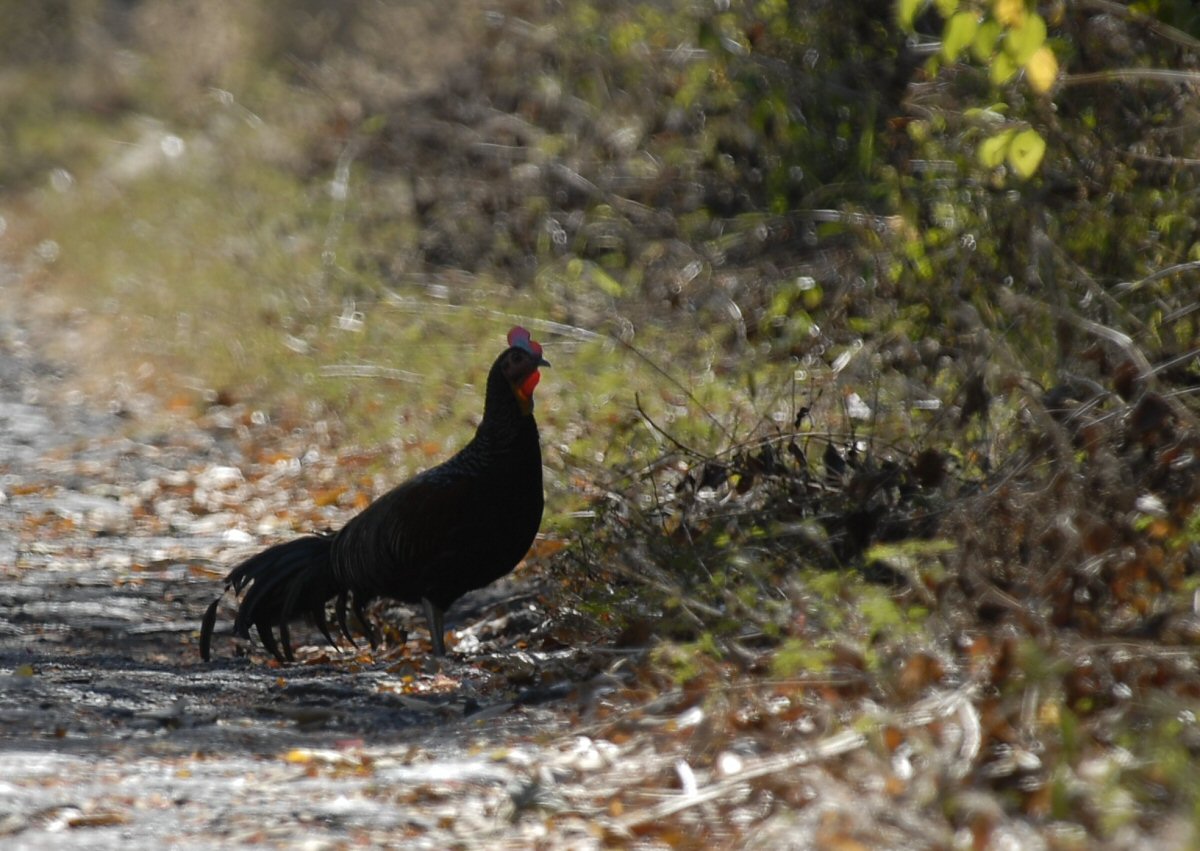
Green Junglefowl, Bekol, Baluran, Java.
From the group of Doves and Pigeons I found Spotted Dove, Pink-headed Fruit Dove, Island Collared Dove, Zebra Dove, Green Imperial Pigeon, Pink-necked Green Pigeon.

Spotted Dove.
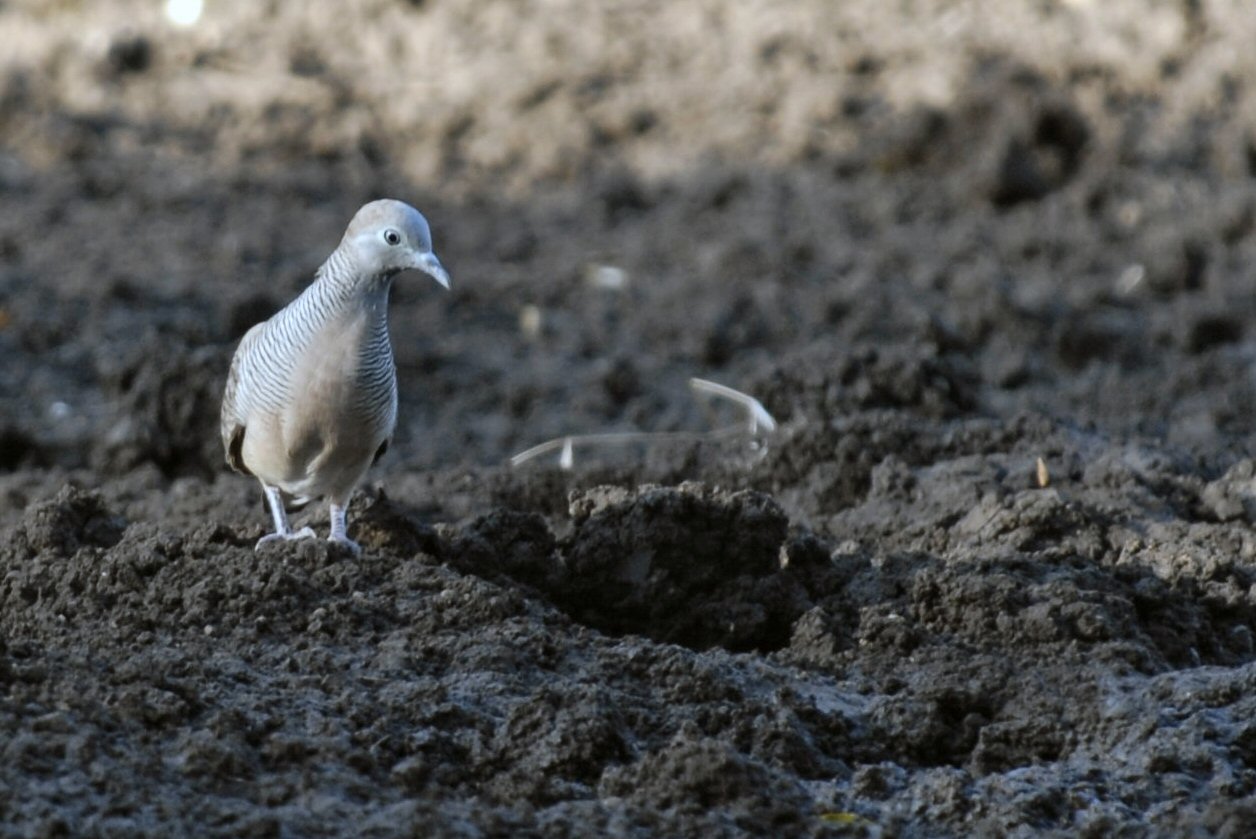
Zebra Dove.
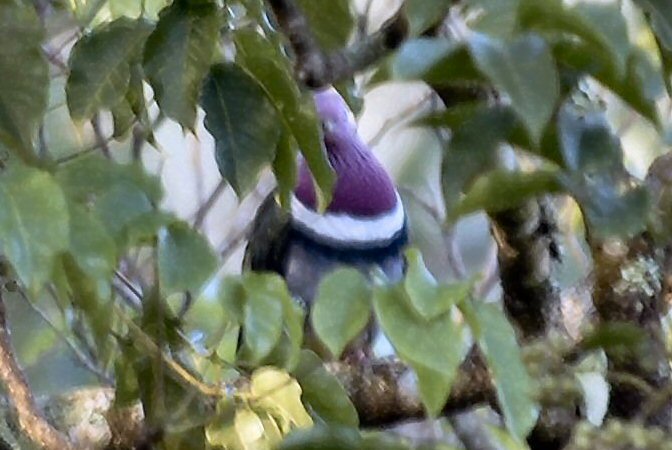
Extreme crop of a Pink-headed Fruit Dove, Cibodas, Java.

Green Imperial Pigeon.
Around a small fish lake near Kuta Lombok I found some marsh birds. Among them Intermediate Egret, Javan Pond-Heron, Common Moorhen, White-breasted Waterhen, Ruddy-breasted Crake and White-browed Crake. Surprisingly here I had my only observation of the magnificant Asian Koel (a female).
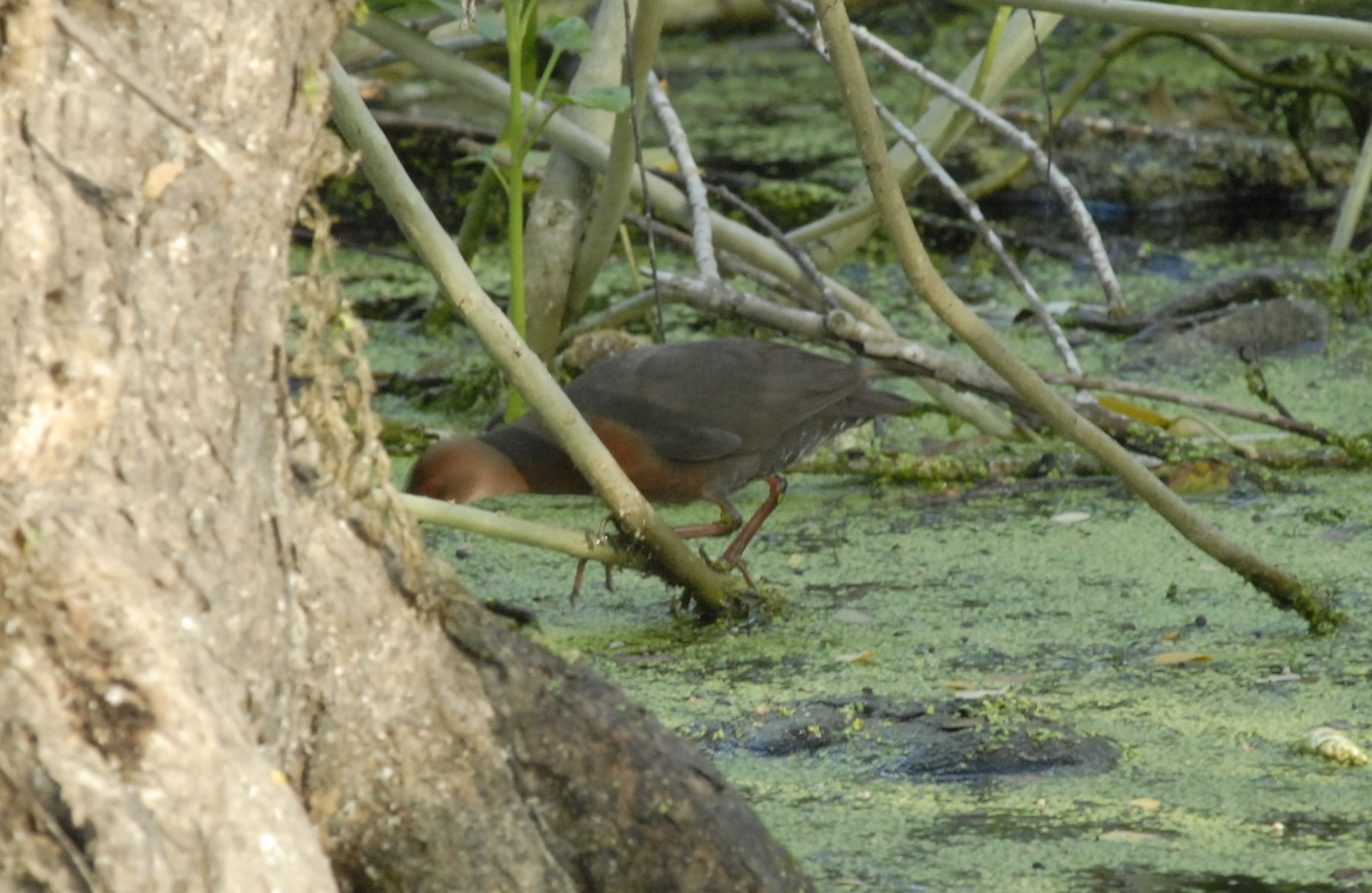
Ruddy-breasted Crake.
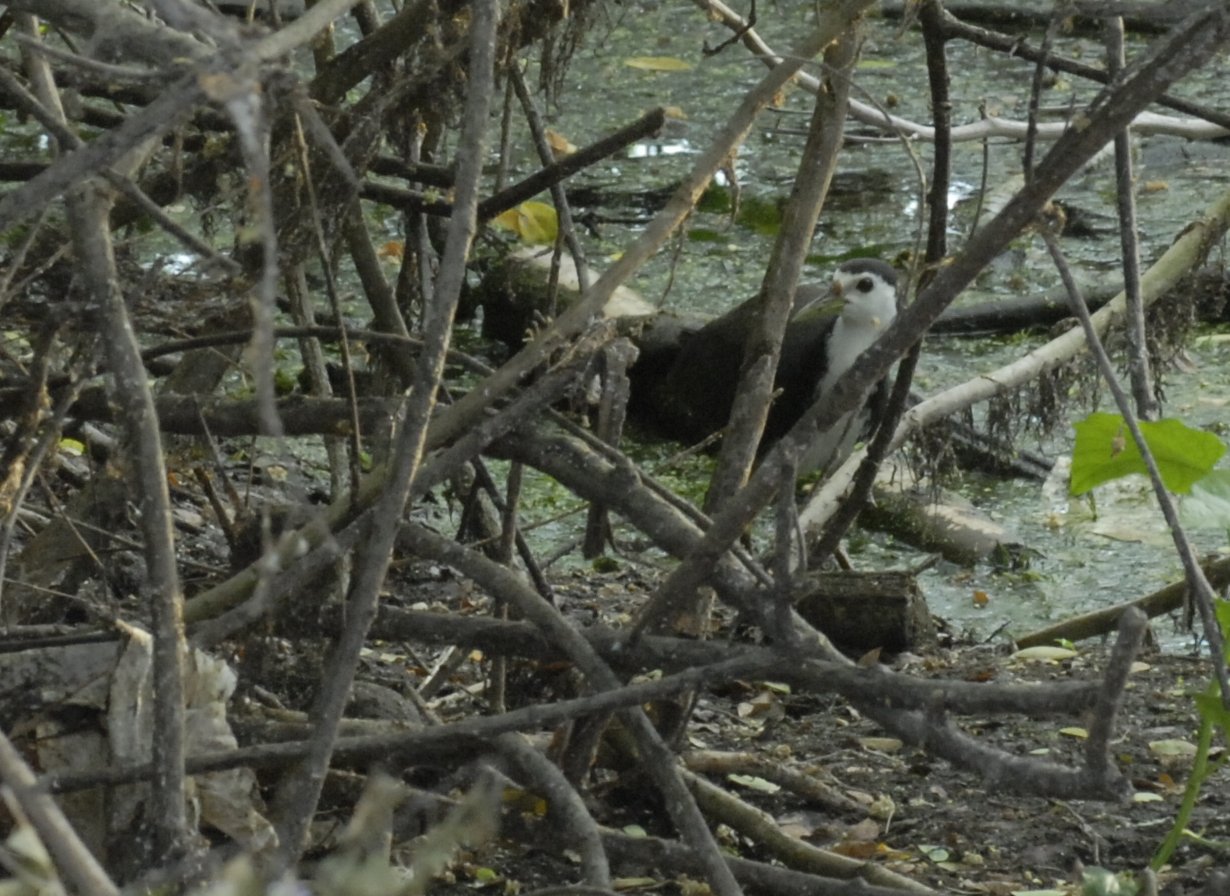
White-breasted Waterhen.
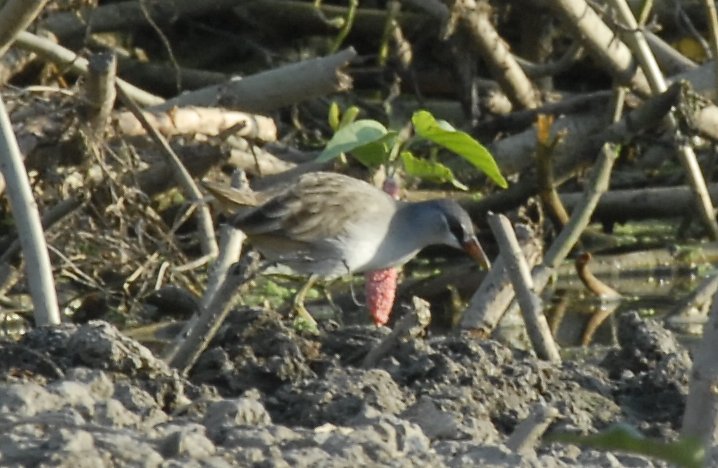
White-browed Crake.
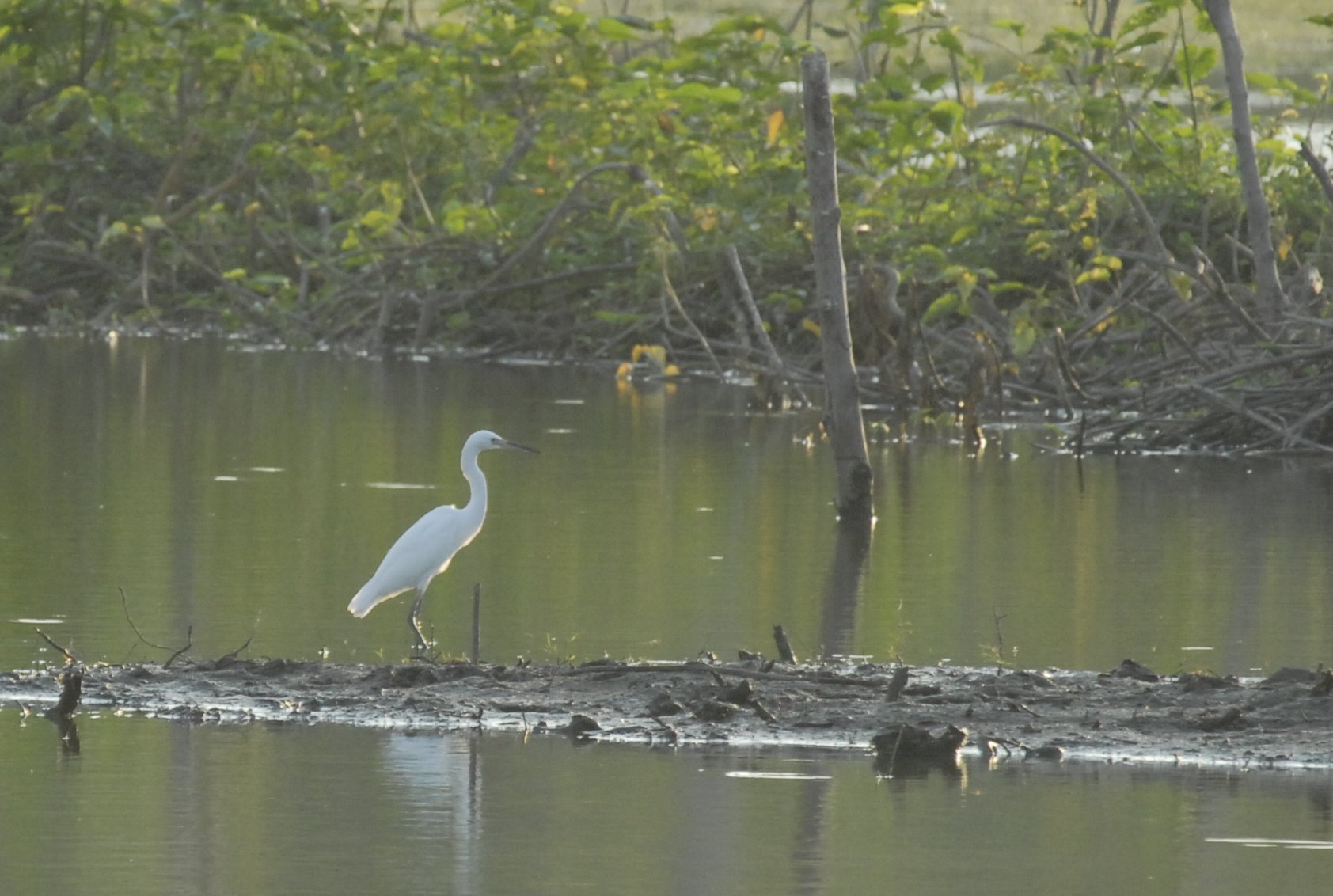
Intermediate Egret.
Swifts were seen every day. They were very difficult to observate. The colour plates of my book did not show both dorsal and ventral sides and I refrained from putting species names on them. Pacific Swallow was present in Kuta Lombok. The most common bird in Indonesia is the Eurasian Tree Sparrow. Javan Sparrows were only seen at Bekol, Java. Both Javan and Scaly-breasted Munias were observed on Java too.
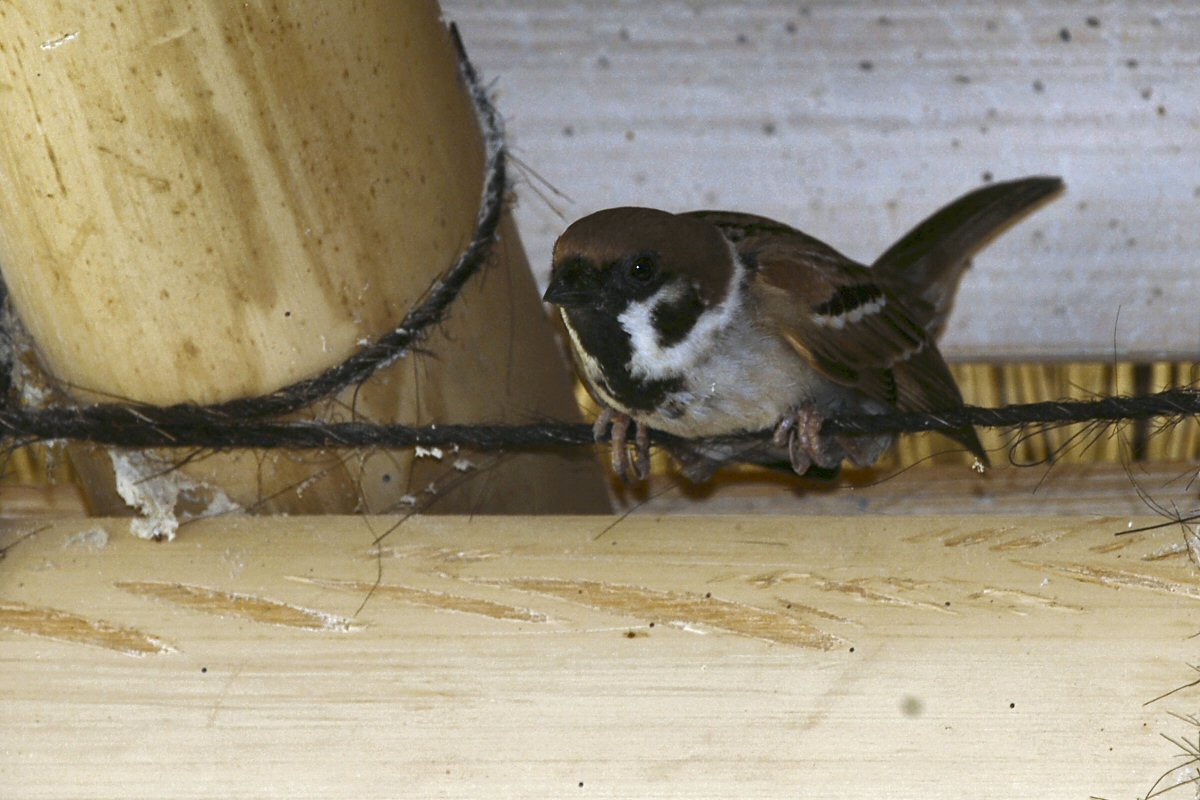
Eurasian Tree Sparrow
Reptiles
The most spectacular find was an Indian Rock Python from about 2,8 meter in Baluran National Park near Bekol. Very few snakes were encounterded this holiday. I caught a very small juvenile of the Painted Bronzeback Tree Snake not far from the python. Grey snakes were seen near water at the waterfall near Kemenuh, Bali. They probably belong to the Wolf Snakes. Some dead on road snakes have been checked by me. One of them seemed to be a Red-necked Keelback. Some others Wolf Snakes. A black and white specimen could not be assigned to a species name.
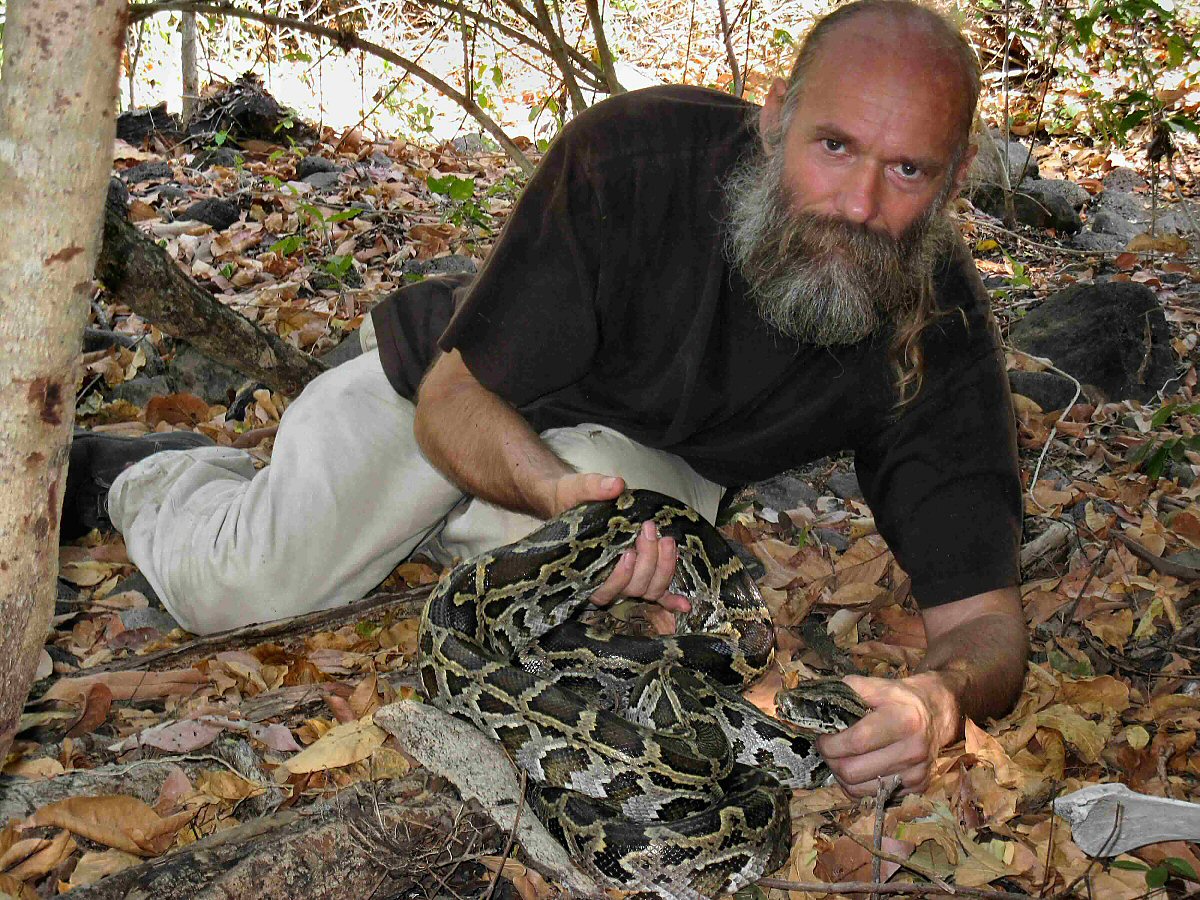
Indian Rock Python, Bekol, Baluran, Java.
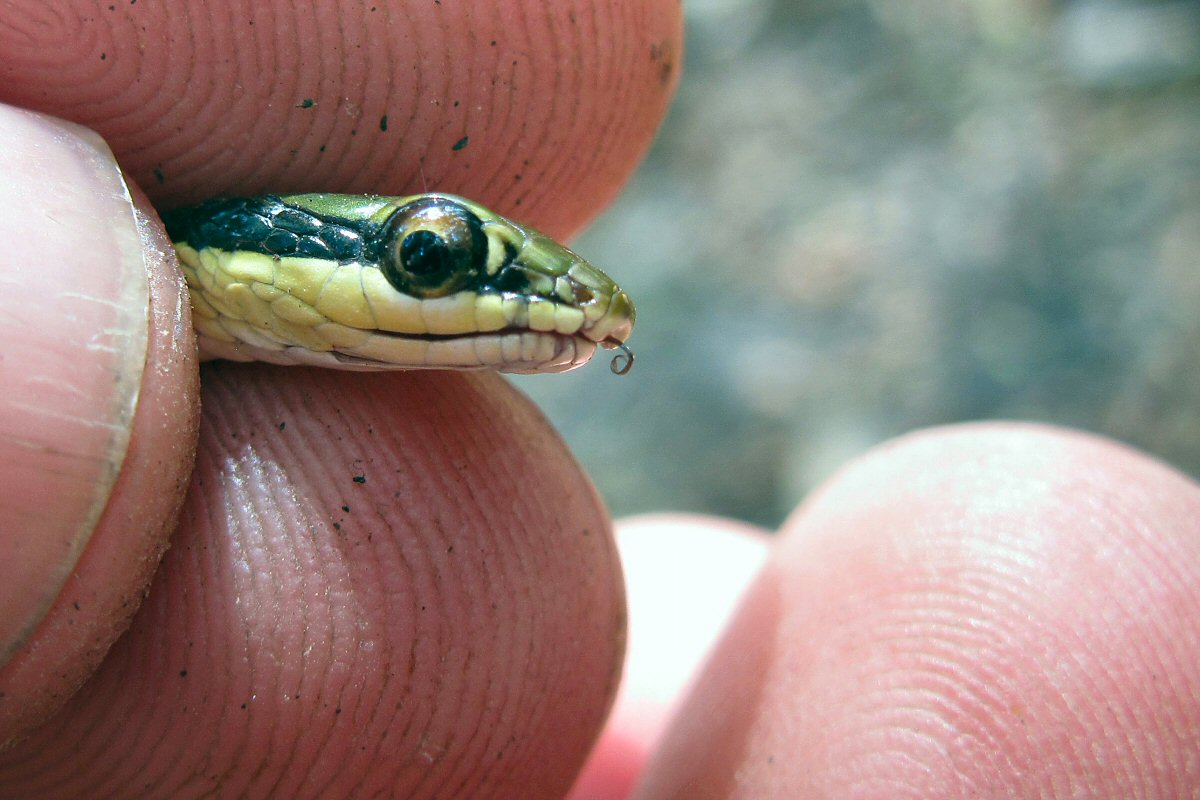
Juvenile Painted Bronzeback Tree Snake, Bekol, Baluran, Java.
In the Gunung Gede National Park at Cibodas two agamids were found. One of them Javanese Long-headed Lizard, the other Kuhl's Angle-headed Lizard. At Bekol several Javanese Flying Lizards could be detected in the trees next to the park office. I witnessed one of them landing after a flight. From the geckos the large Tokay Gecko was heard and seen at several locations. Virtually everywhere the Common House Gecko was present, even in our sleeping rooms.
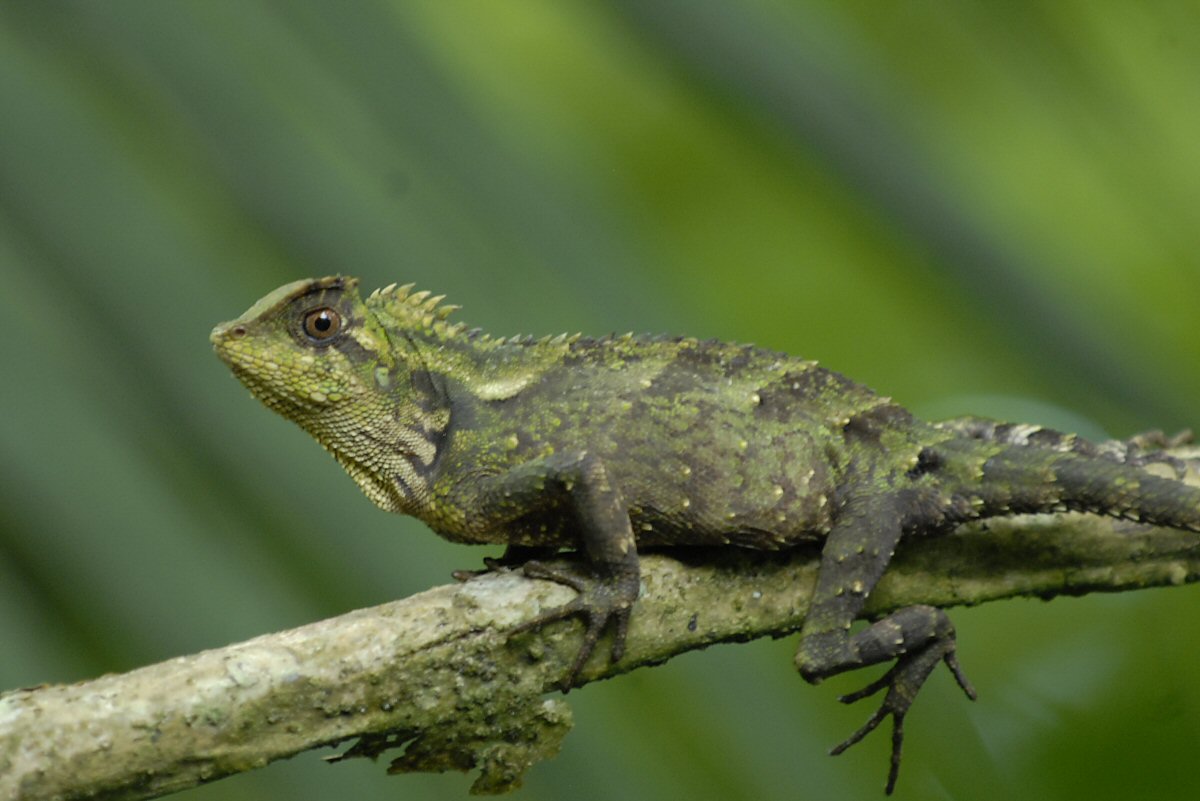
Kuhl's Angle-headed Lizard, Cibodas, Java.
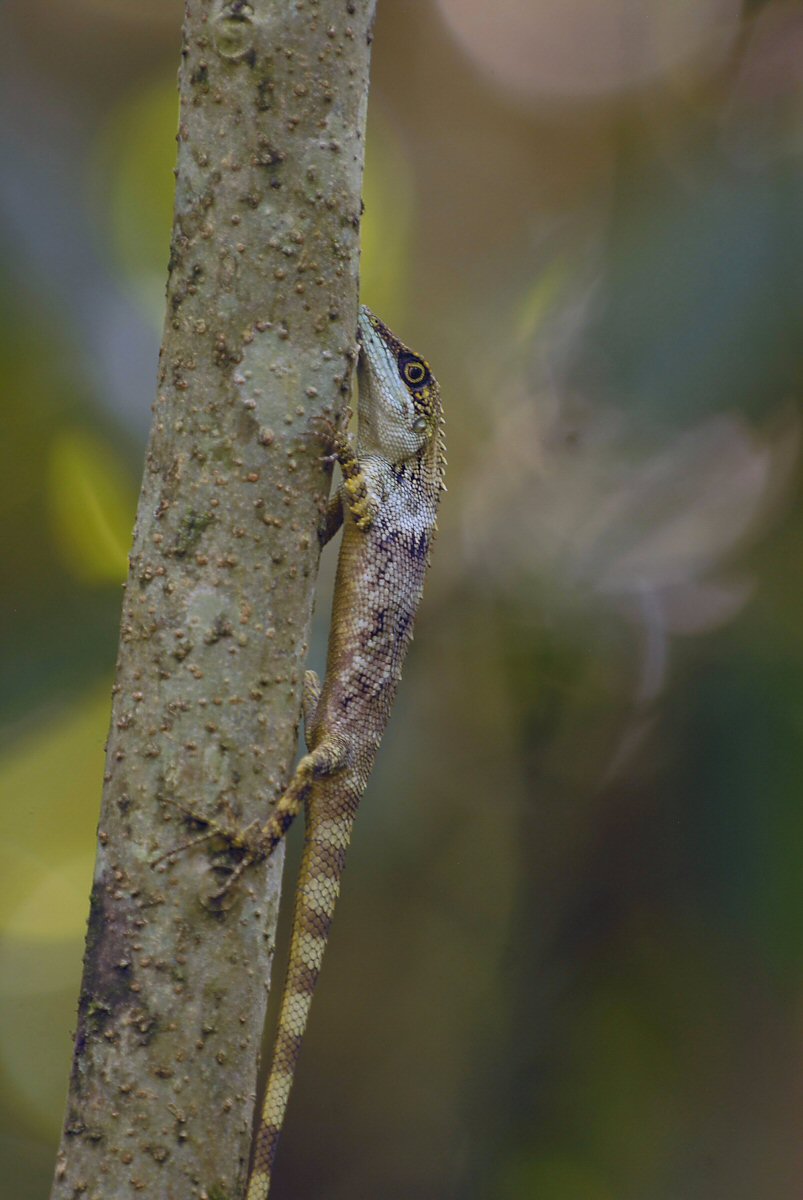
Javanese Long-headed Lizard, Cibodas, Java.

Common House Gecko.
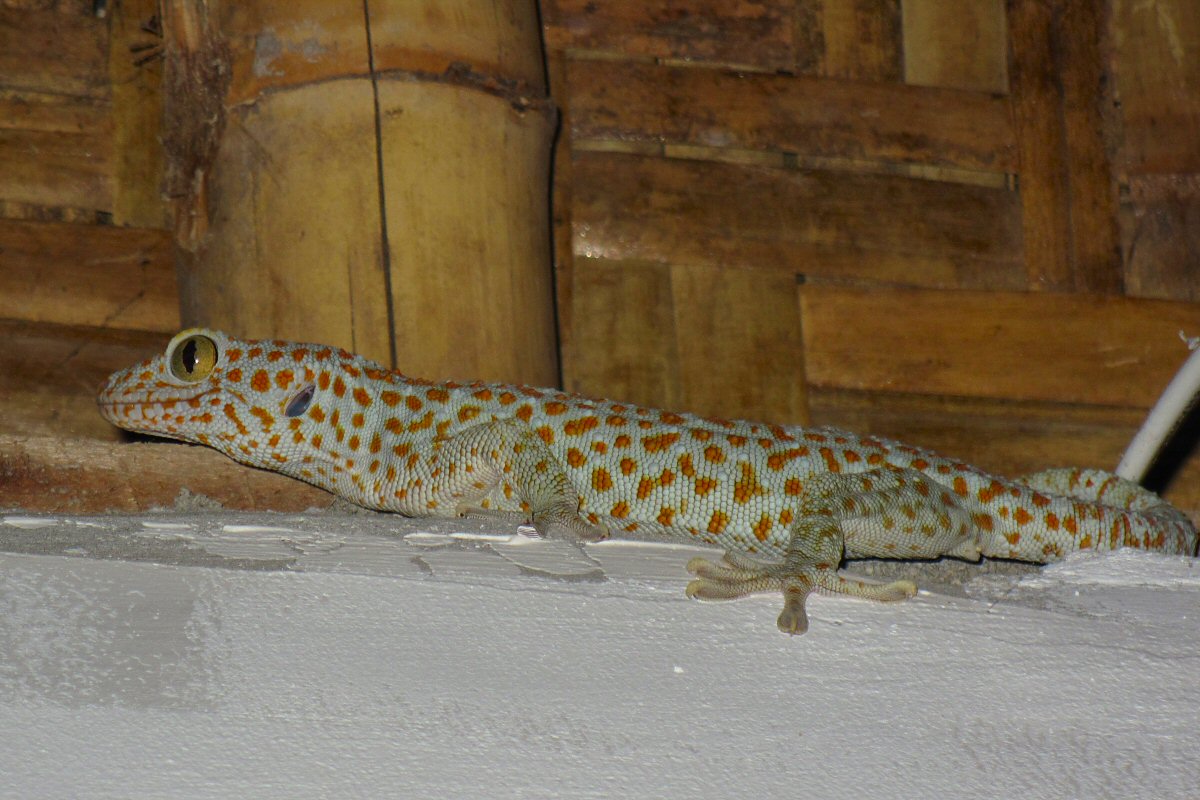
Tokay Gecko.
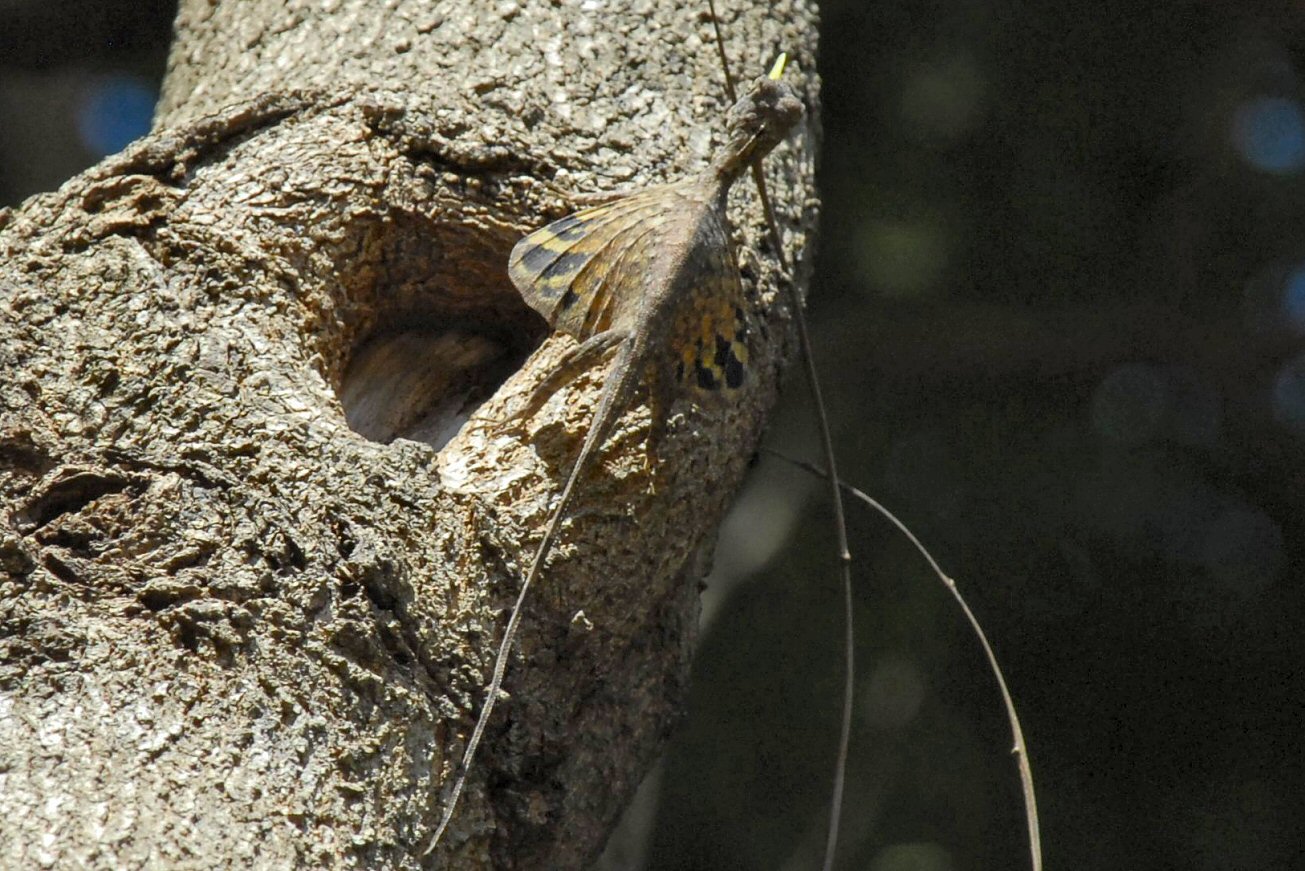
Javanese Flying Lizard.
Water Monitor Lizards were at the beach of Panangdaran, Java, near the beach at Bama (Baluran) and also close to the coast at Kuta, Lombok. The biggest specimens exceeded one and a half meter in lenght.

Water Monitor Lizard, Panangdaran, Java.
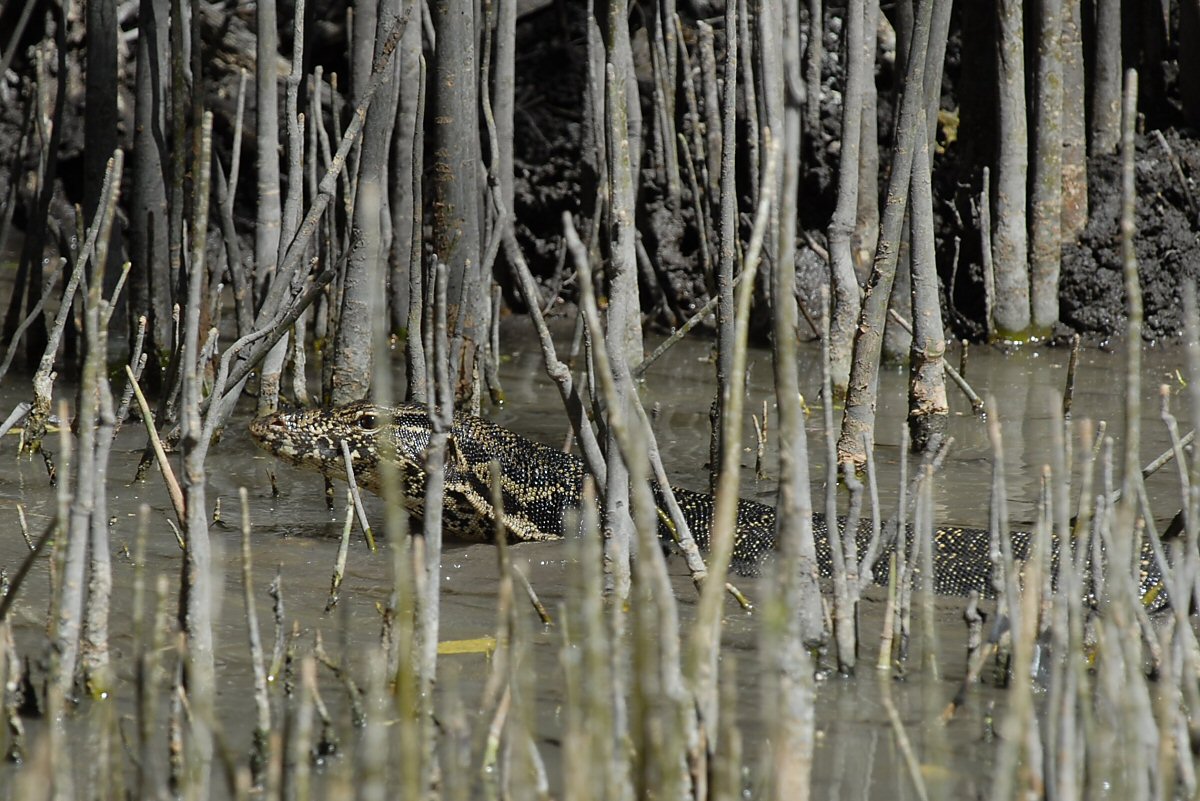
Water Monitor Lizard, mangrove, Bama (Baluran), Java.
Amphibians
Although Indonesia seems to be an amphibian hotpot (almost 400 species with a high amount of endemics), few were encountered during our holiday, which was in the dry season. Asian Common Toads were found everywhere, especially in the evening or after rainfall. Other commonly encountered toads were Indonesian Toads, which are surprisingly similar to the Common Toads at home. Hanging in toilets and on tree leaves tree frog like creatures were found now and then. Slender frogs of hitherto undetermined species were photographed too. We saved the live of a severely dehydrated Smooth-fingered Narrow-mouthed Frog from the bathroom of our room at Kuta Lombok.
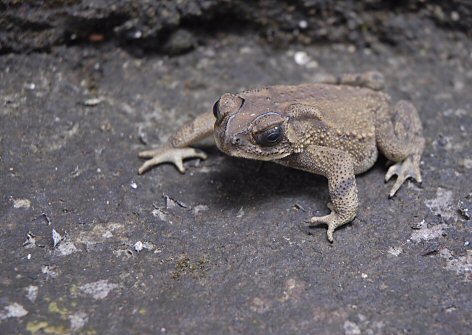
Asian Common Toad.
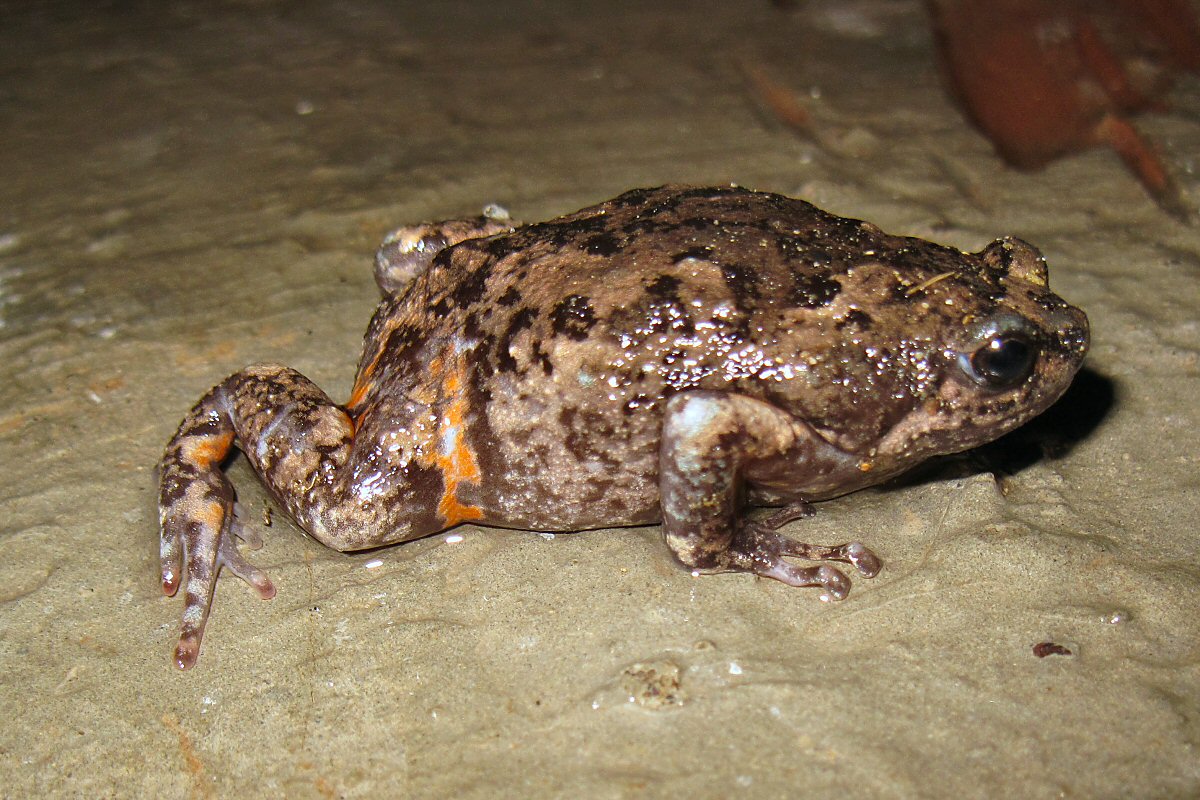
Smooth-fingered Narrow-mouthed Frog.
Mammals
Indonesia is quite rich in mammals, more than 700 species are known. From the group of primates we were lucky to find several species. Crab-eating Macaque is very common on all three islands. They are a pest and in many cases not afraid of people. They are masters in stealing goods, for instance food or beverages from bags or even the whole bag itself. Animals in turist-rich areas perfectly know how to open bottles. I regularly had to throw stones to these monkeys in order to save my belongings. The other species are quite shy. The Javan Lutung (also known as Ebony Leaf Monkey) can be both black or reddish-brown. In most cases we just saw black specimens. In one group at Bama beach in Baluran, Java we saw a brown specimen. We were quite lucky to see a group of Javan Surili (als called Grizzled Leaf Monkey) near the waterfall at Cibodas National Park. This species is endangered. They had lovely long silvery hair. From more or less the same spot we just heard the song of the Javan Gibbon.
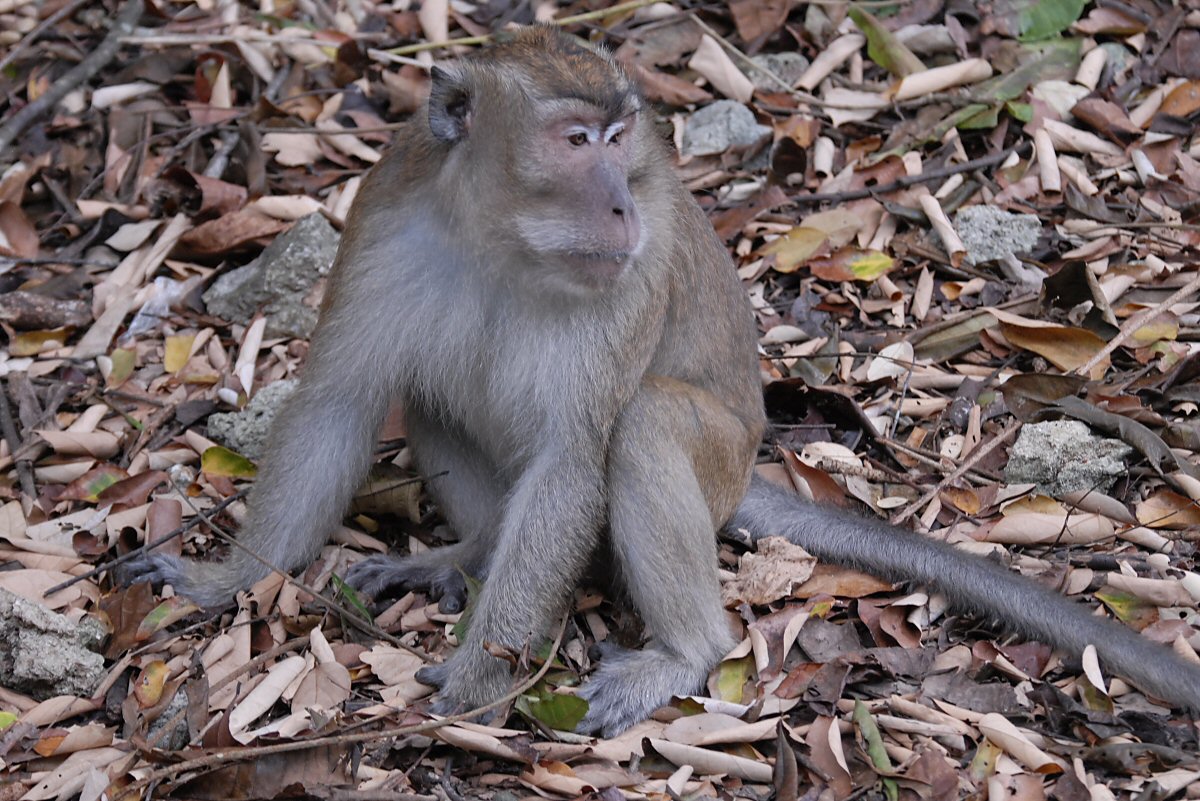
Crab-eating Macaque.
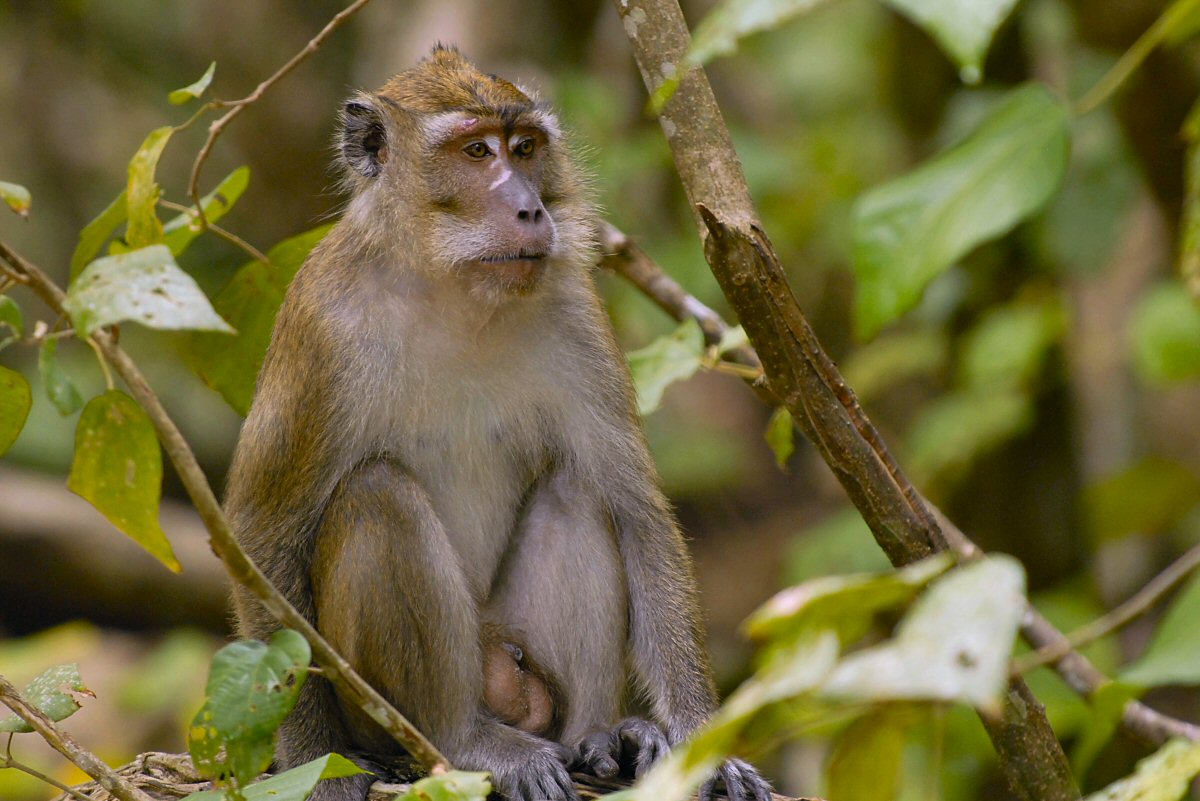
Crab-eating Macaque.
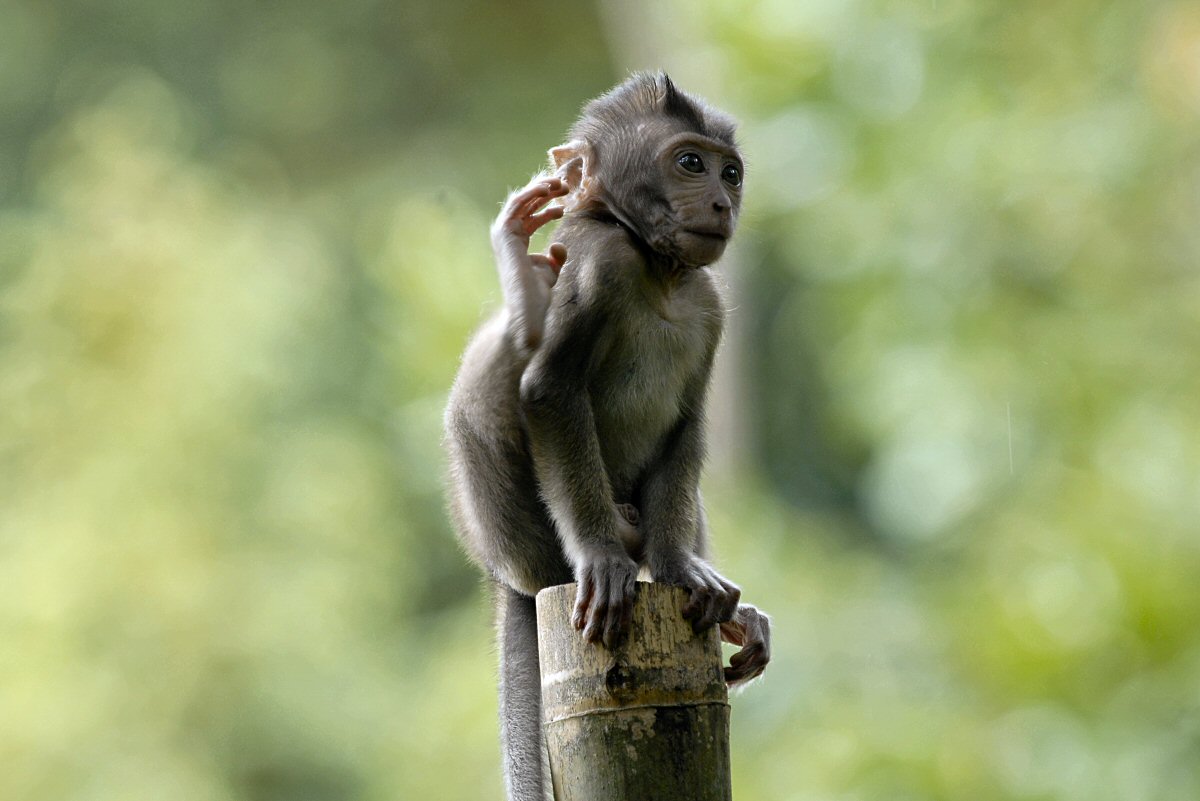
Juvenile Crab-eating Macaque.
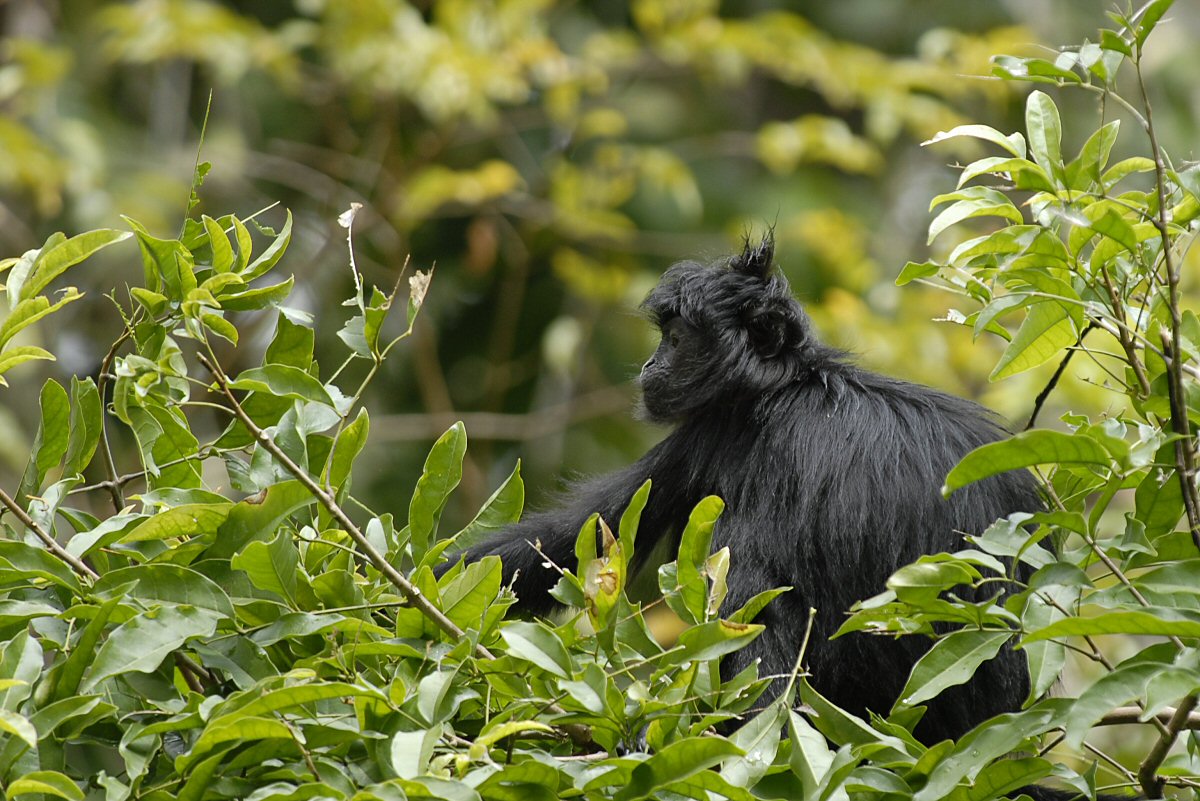
Javan Lutung.
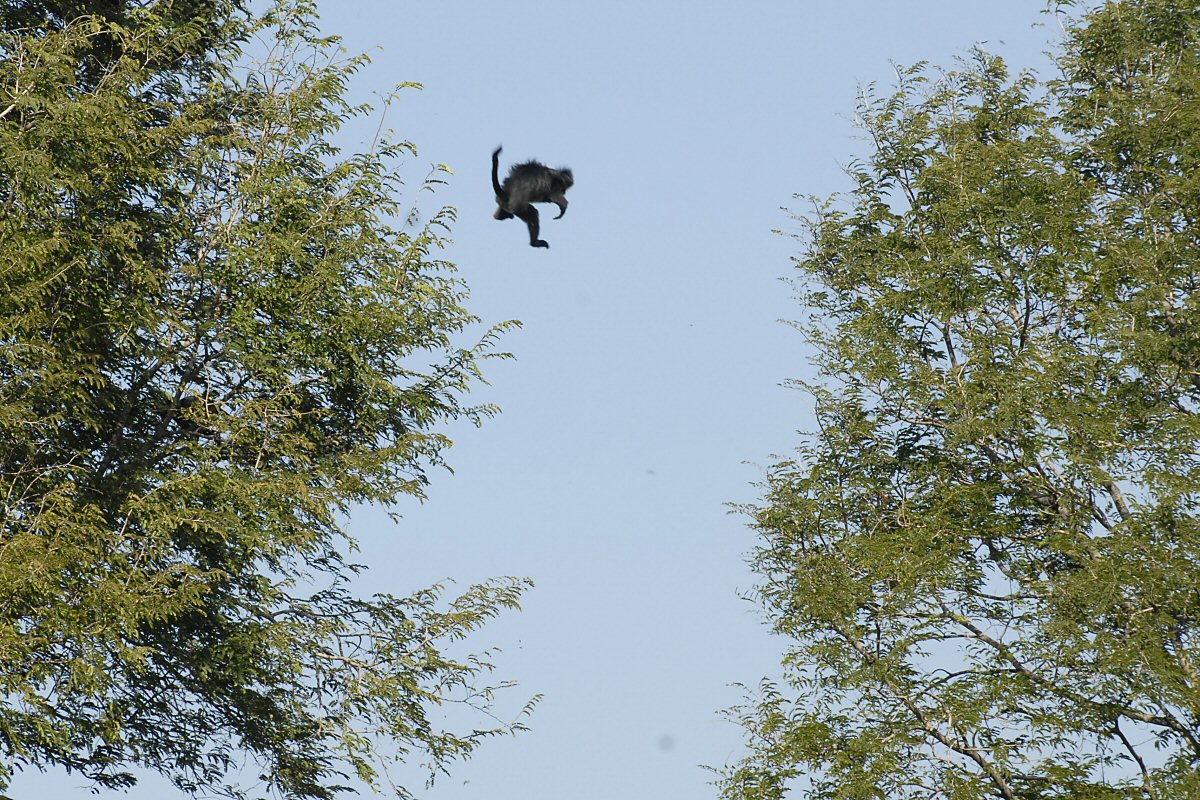
Javan Lutung jumping from one tree to another.
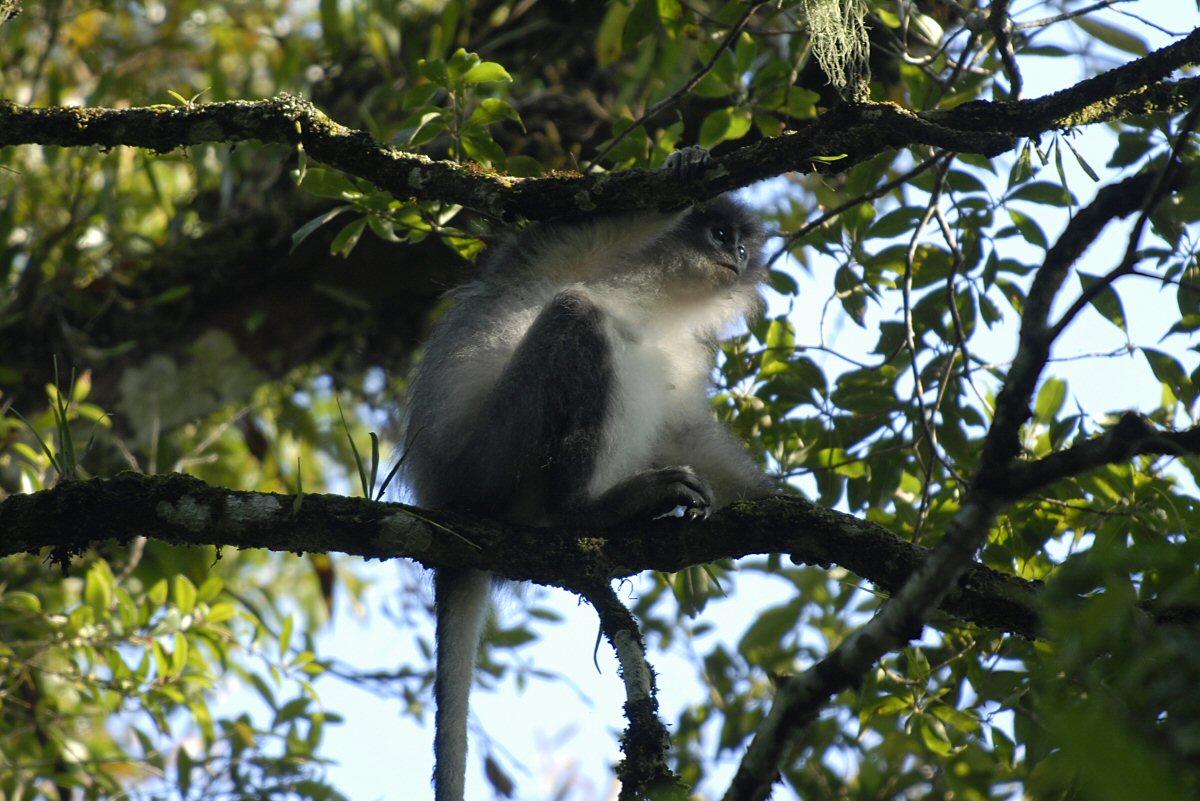
Javan Surili.
From the Bovids three species were seen. Rusa Deer were encountered on several occasions. They turned out to be not shy at all and even absolutely tame at Pangandaran beach (touchable). At Bekol males were burling. At that area feral Bantengs should occur. We only could see two females in a fenced area ready to be introduced in the population. On Bali and Lombok many domesticated Bantengs were kept by farmers as cows. Third species, also in Baluran Park, was the Feral Water Buffalo. Wild Boar were heared and shortly seen at Cibodas.
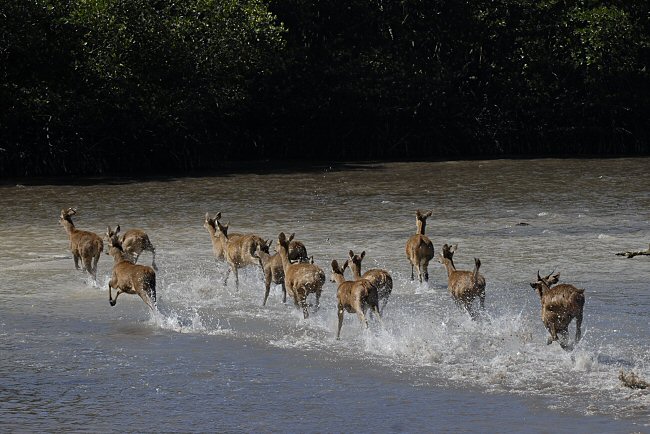
Rusa Deer in the sea at Bama Beach, Baluran, Java.
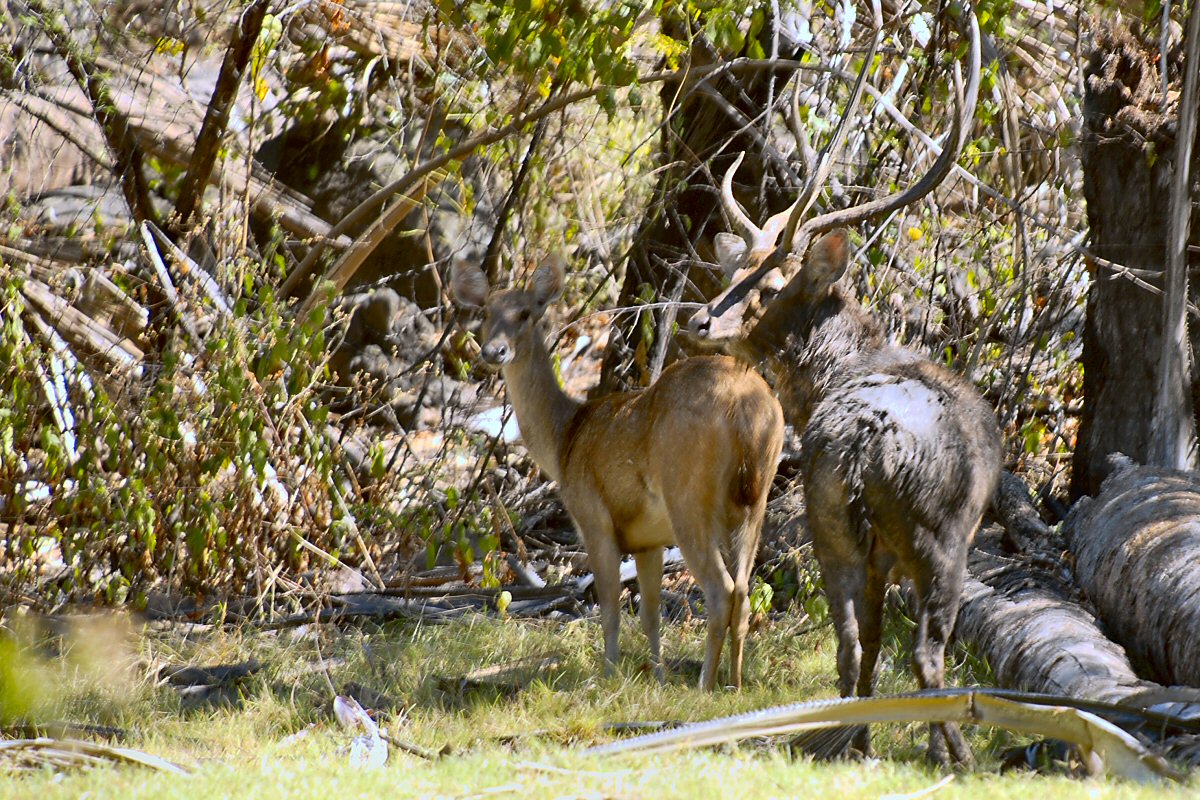
Rusa Deer.
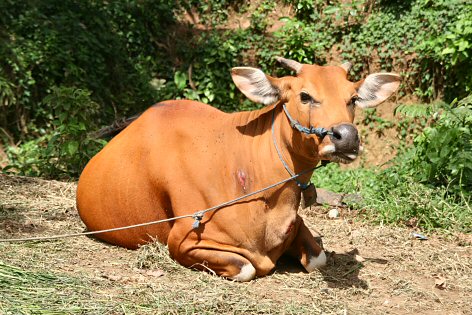
Domesticated Banteng.
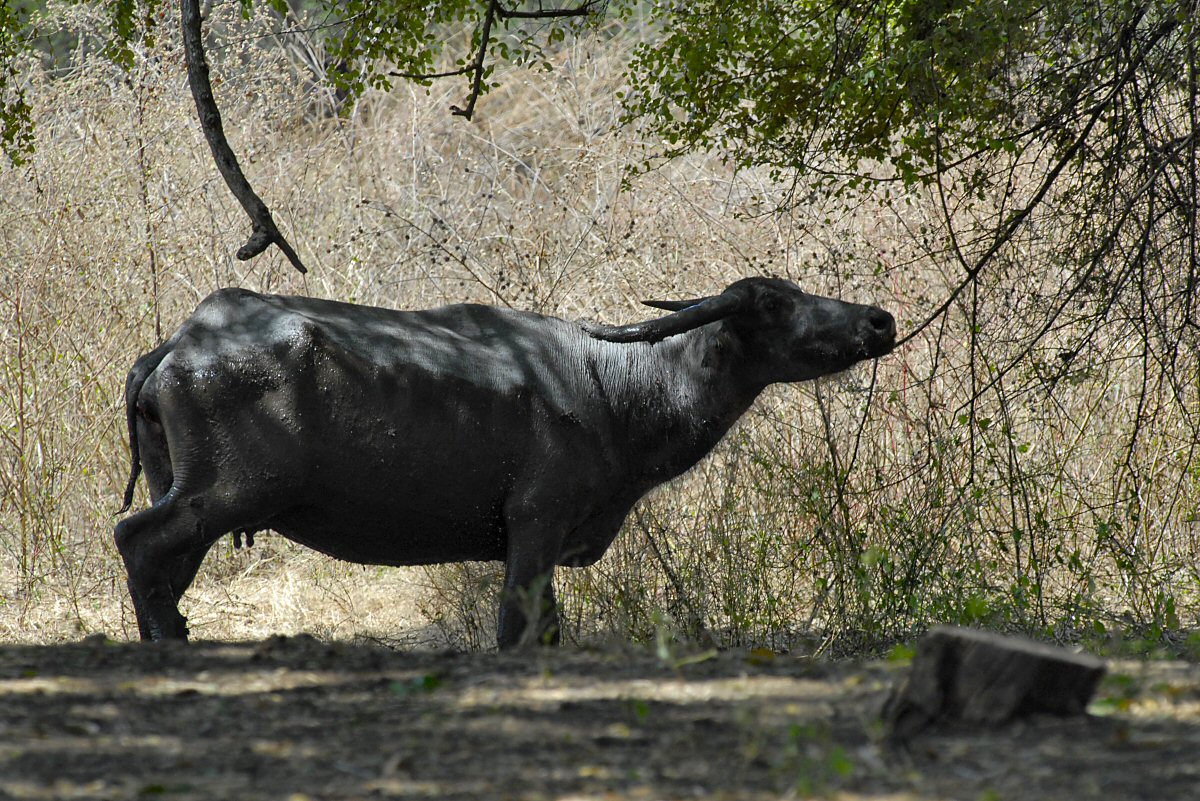
Feral Water Buffalo.
Squirrels and Treeshrews were common in all forested areas. Slender Squirrel, Sunda Black-banded Squirrel, Three-striped Groundsquirrel, Cream-coloured Giant Squirrel and Javan Treeshrew were recognised. A Common Palm Civet was found on the room of the children. At Suranadi (Lombok) large shrews were present. They fought which each other and screamed loudly. I tried to catch one by bare hand but got bitten severely (blood) and the animal escaped. Nice to know that there is no rabies on Lombok.
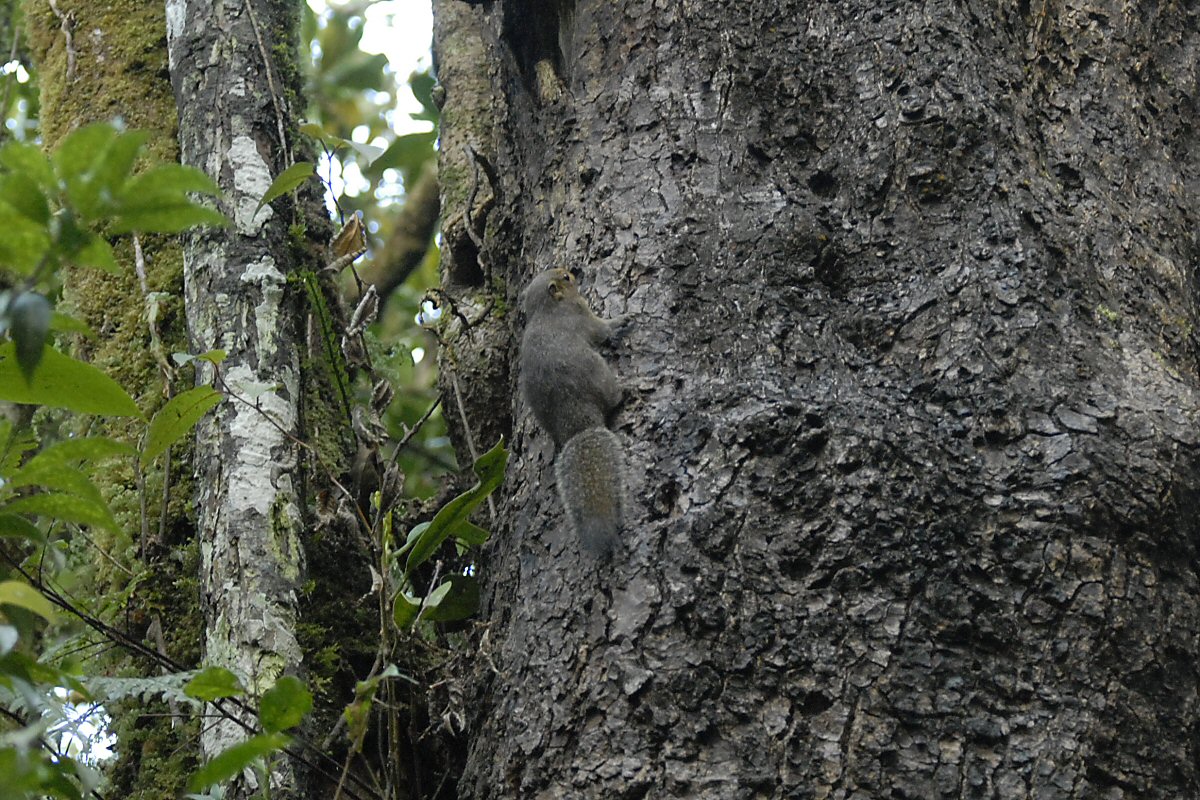
Squirel at Cibodas, Java.
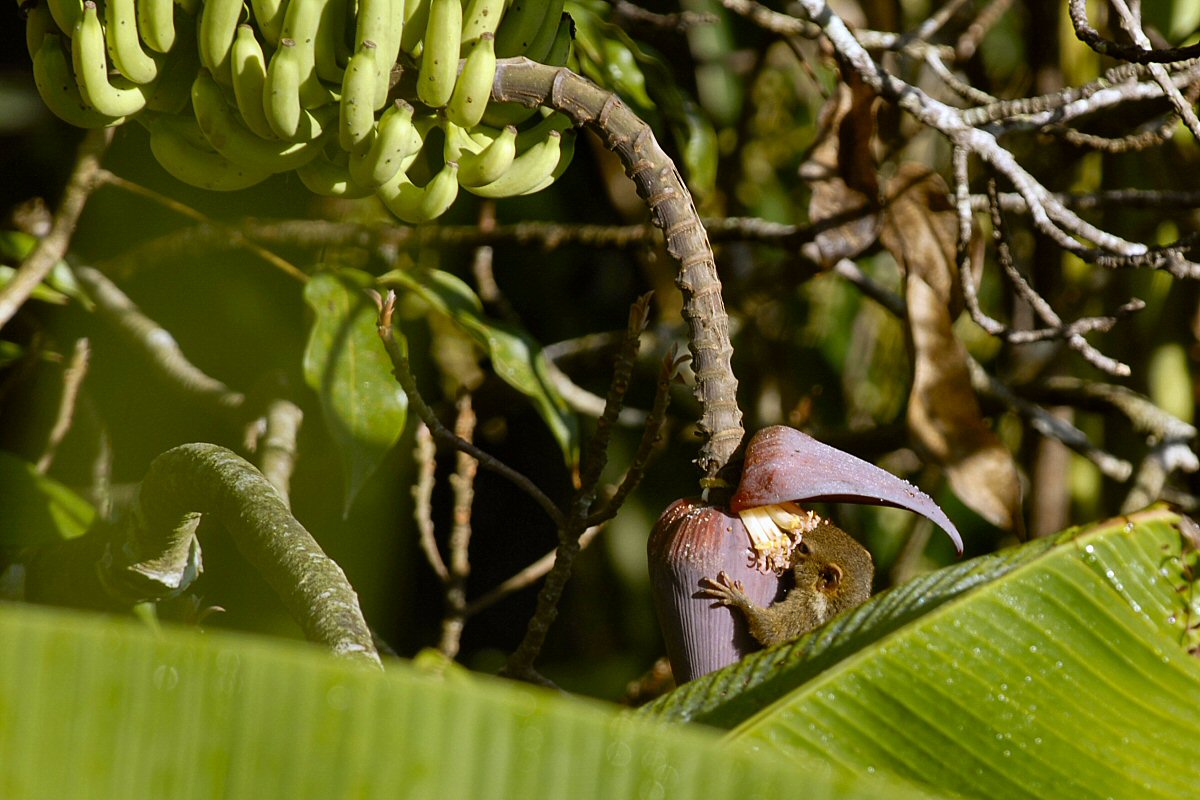
Feeding on banana flower at Cibodas, Java.
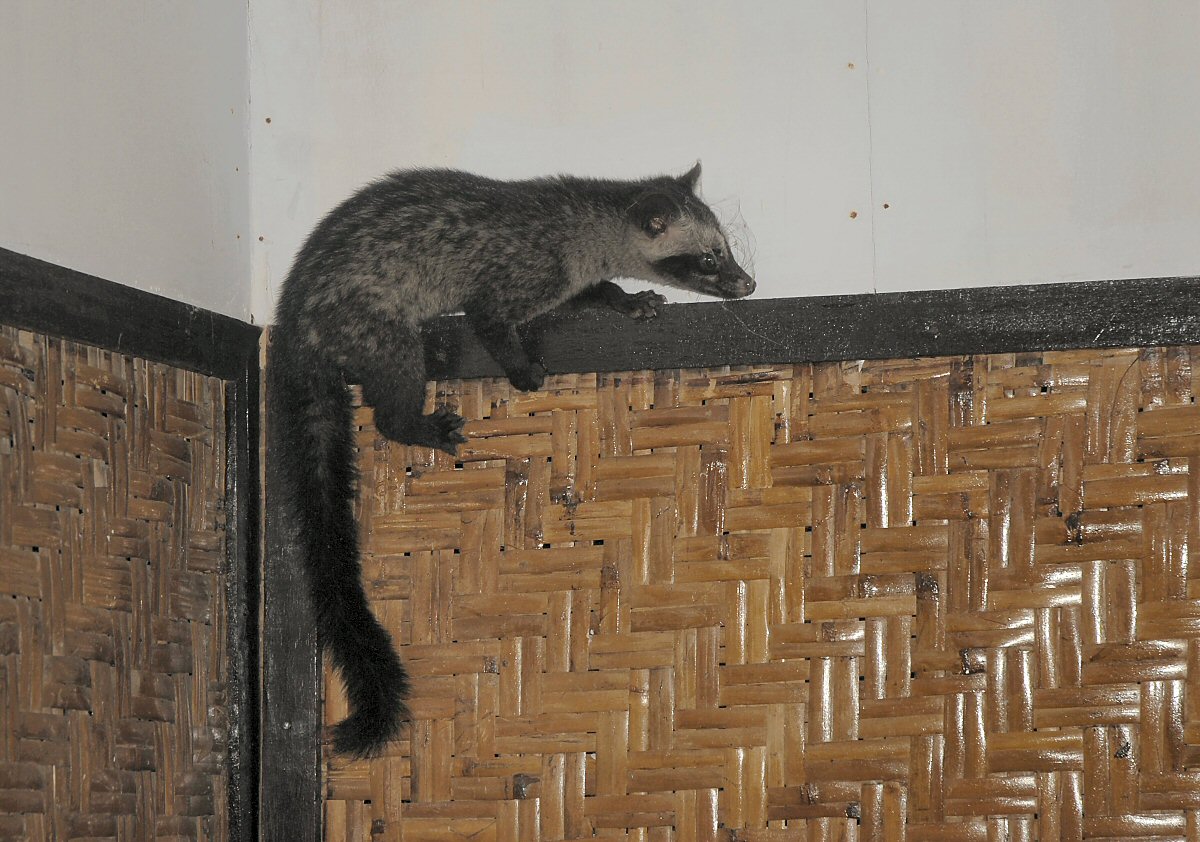
Common Palm Civet.
Bats were active every night. From a roof close to our room at Suranadi, Lombok we witnessed the dusk exit of a large colony of Free-tailed Bats, probably Wrinkle-lipped Free-tailed Bats. We counted almost a thousand animals in a few minutes. Large fruit-eating bats flew high in the sky every evening at Pangandaran. In Bekol I found Lesser False Vampire Bats under the roof of a watchtower. In caves and under roofs we saw several species of bats.

Cave-roosting fruitbats.

Lesser False Vampire Bat.

Some kind of Horseshoe Bat (Rhinolophus spec.).
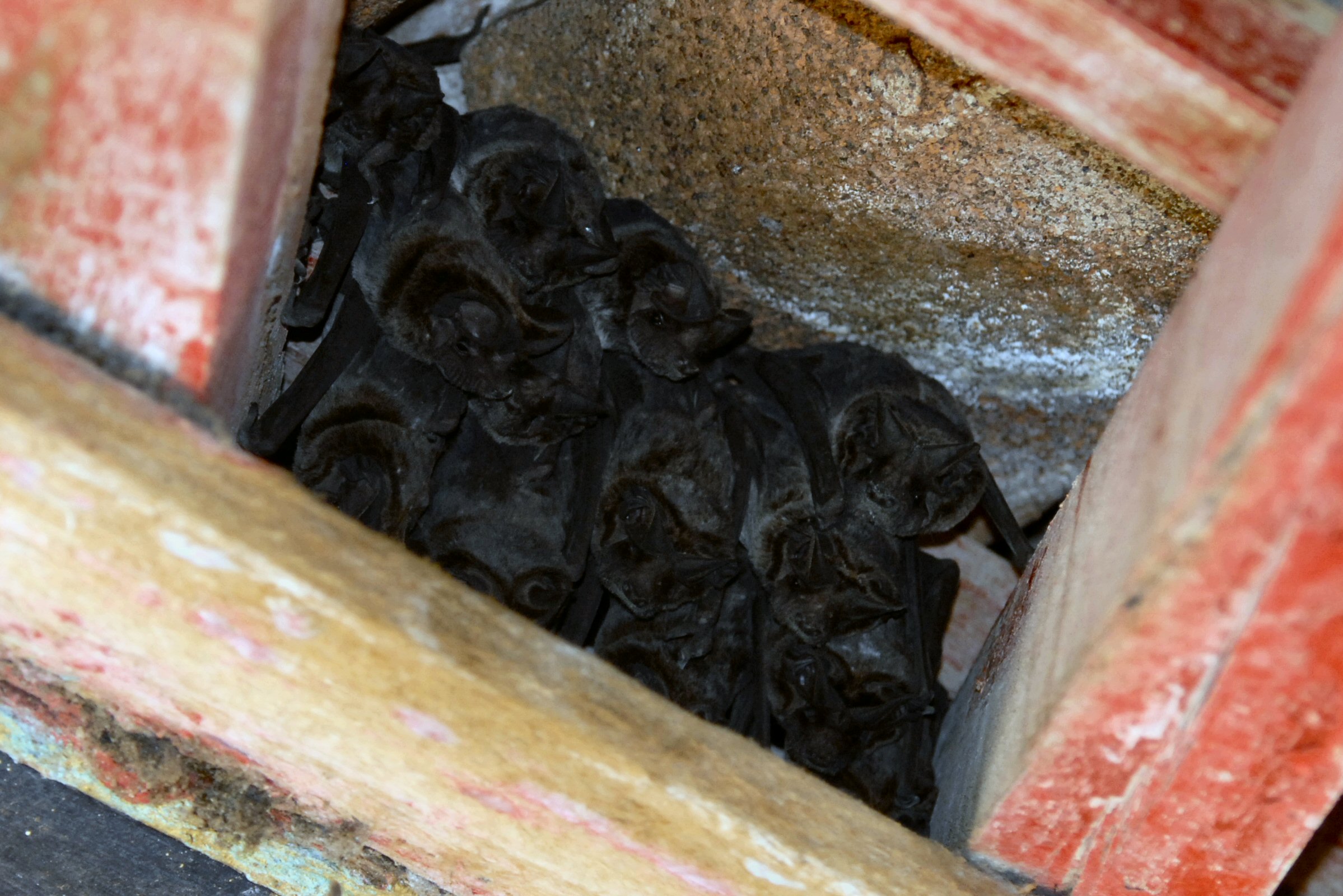
Free-tailed Bats (Chaerephon cf. johorensis).
Invertebrates
Some remarkable invertebrates found by us in Indonesia are mentioned here. Giant web spiders were seen at Lombok. In caves near Pangandaran lived big crickets. Many species of crickets and grasshoppers were found by Kees and me. Preying Mantis were also seen now and than. On Lombok we found Coconut Rhinoceros Beetles regularly, attracted by our room light.
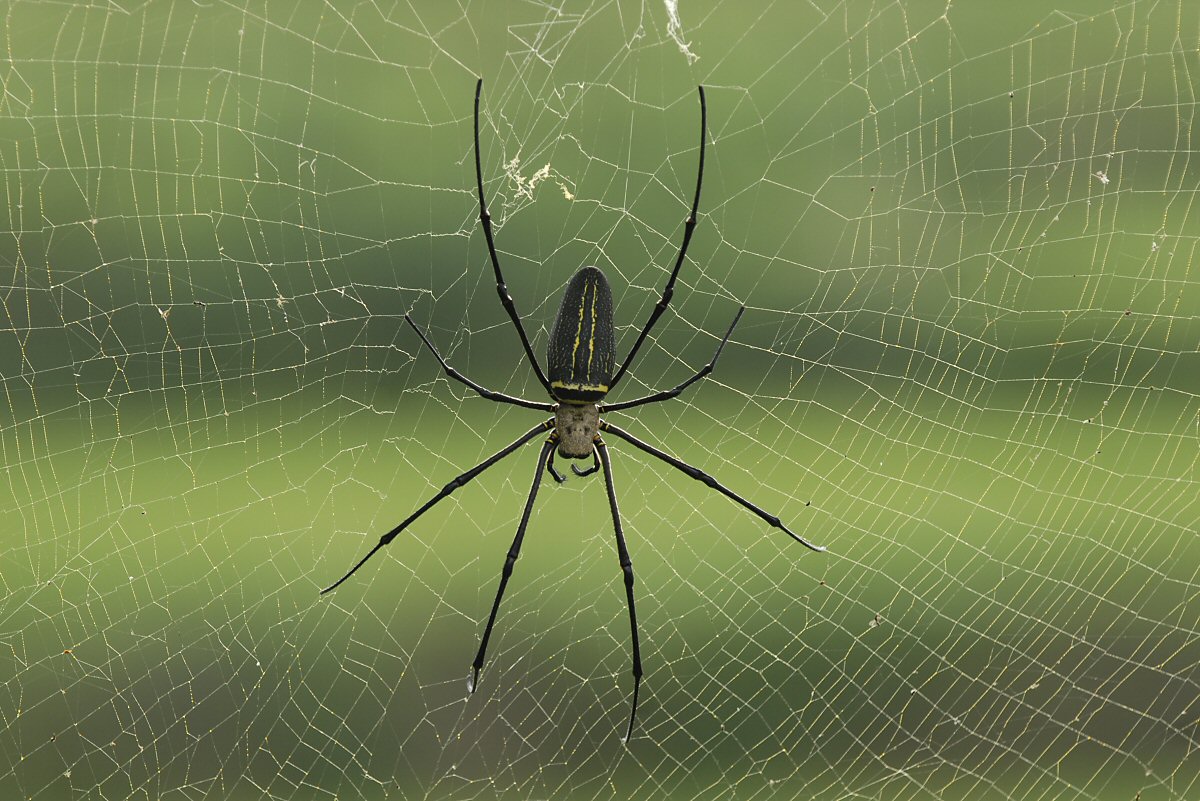
Big spider at Terebatu, Lombok.
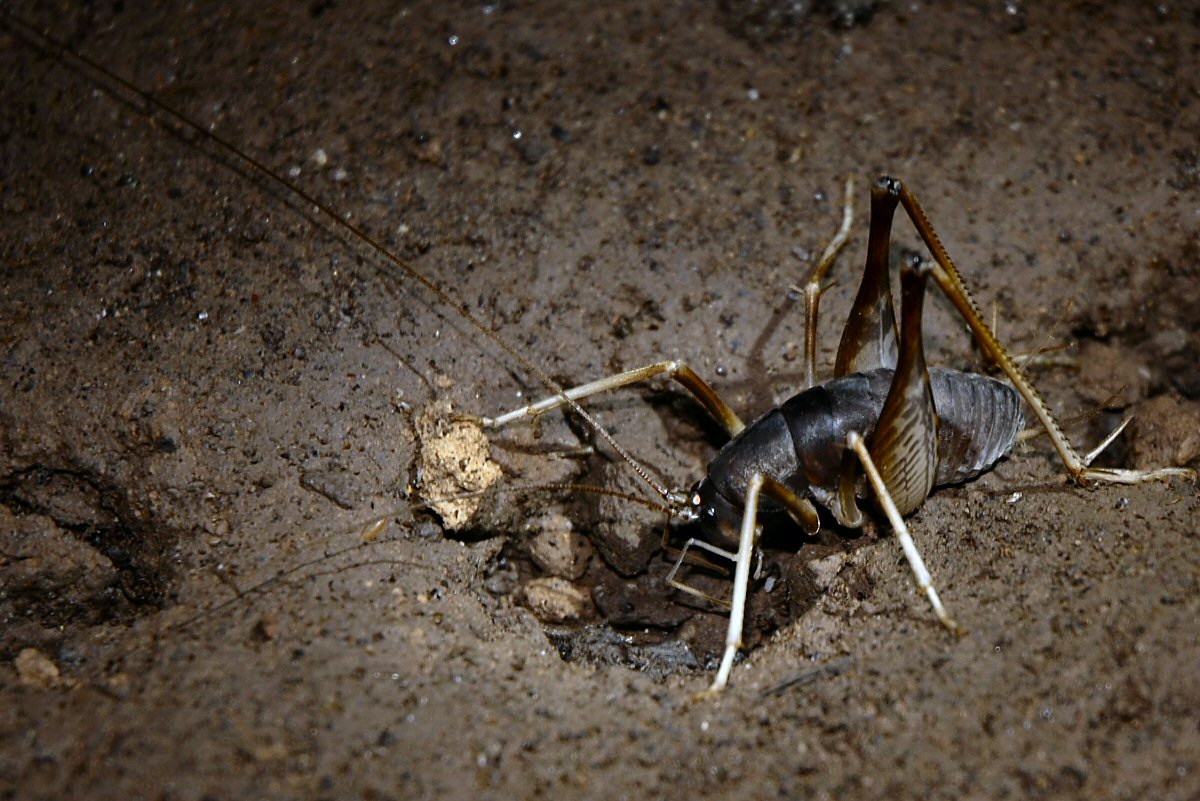
Cave cricket, Panangdaran, Java.
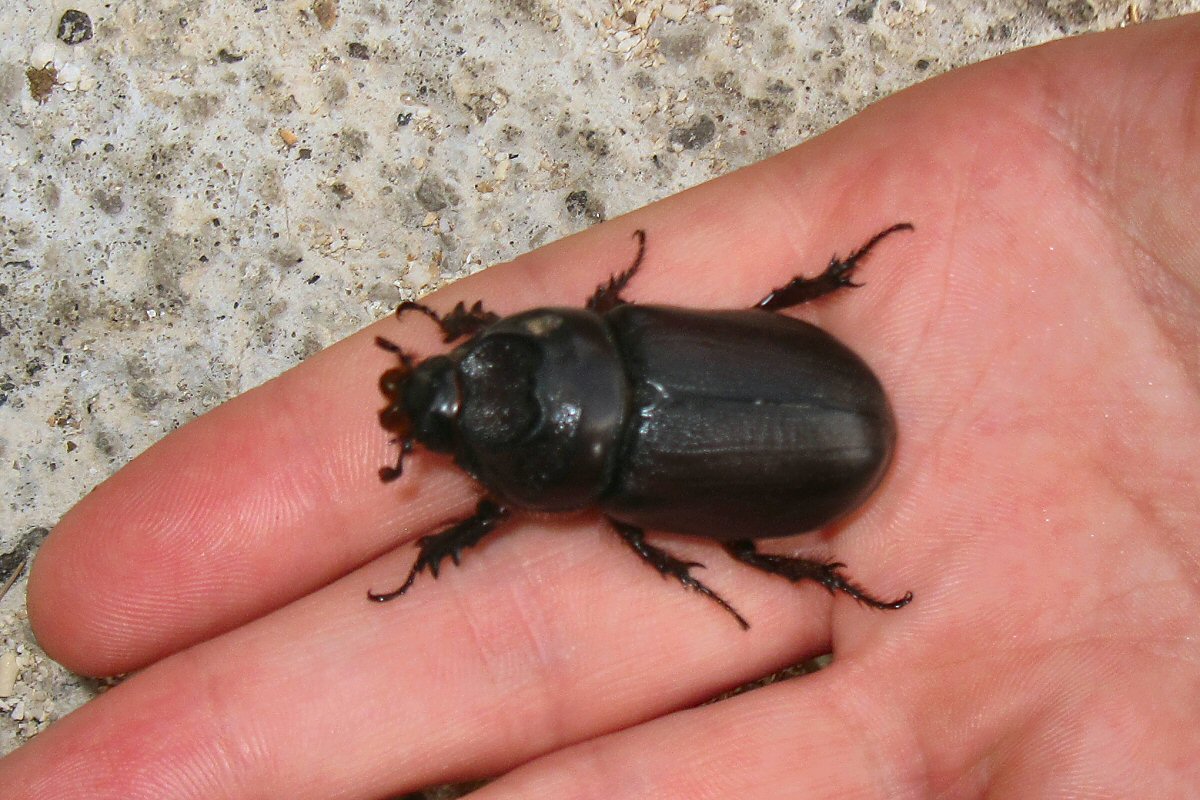
Coconut Rhinoceros Beetle.






